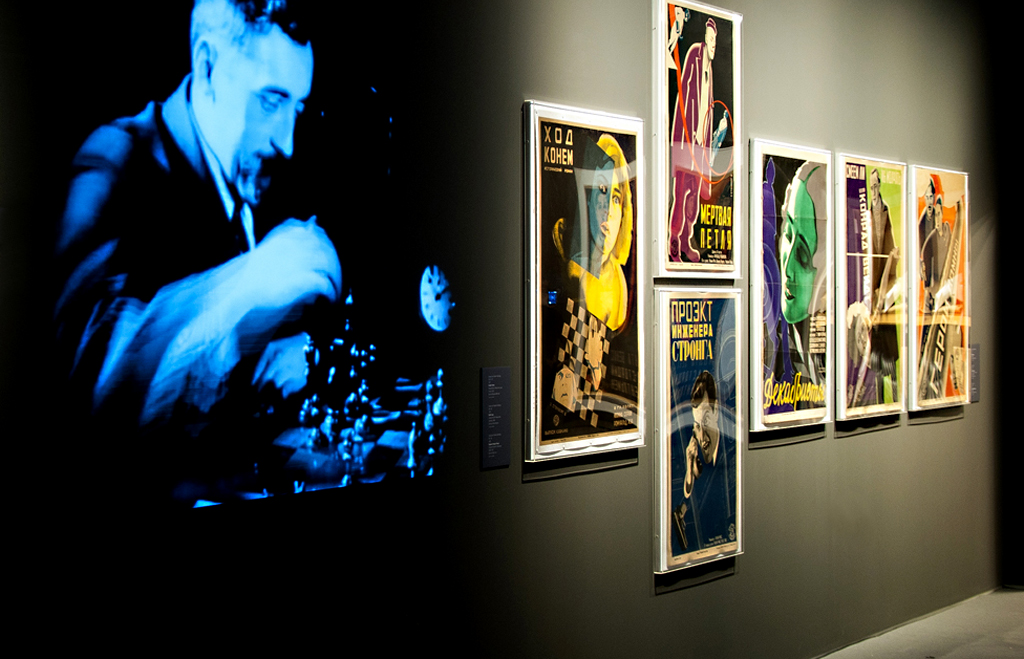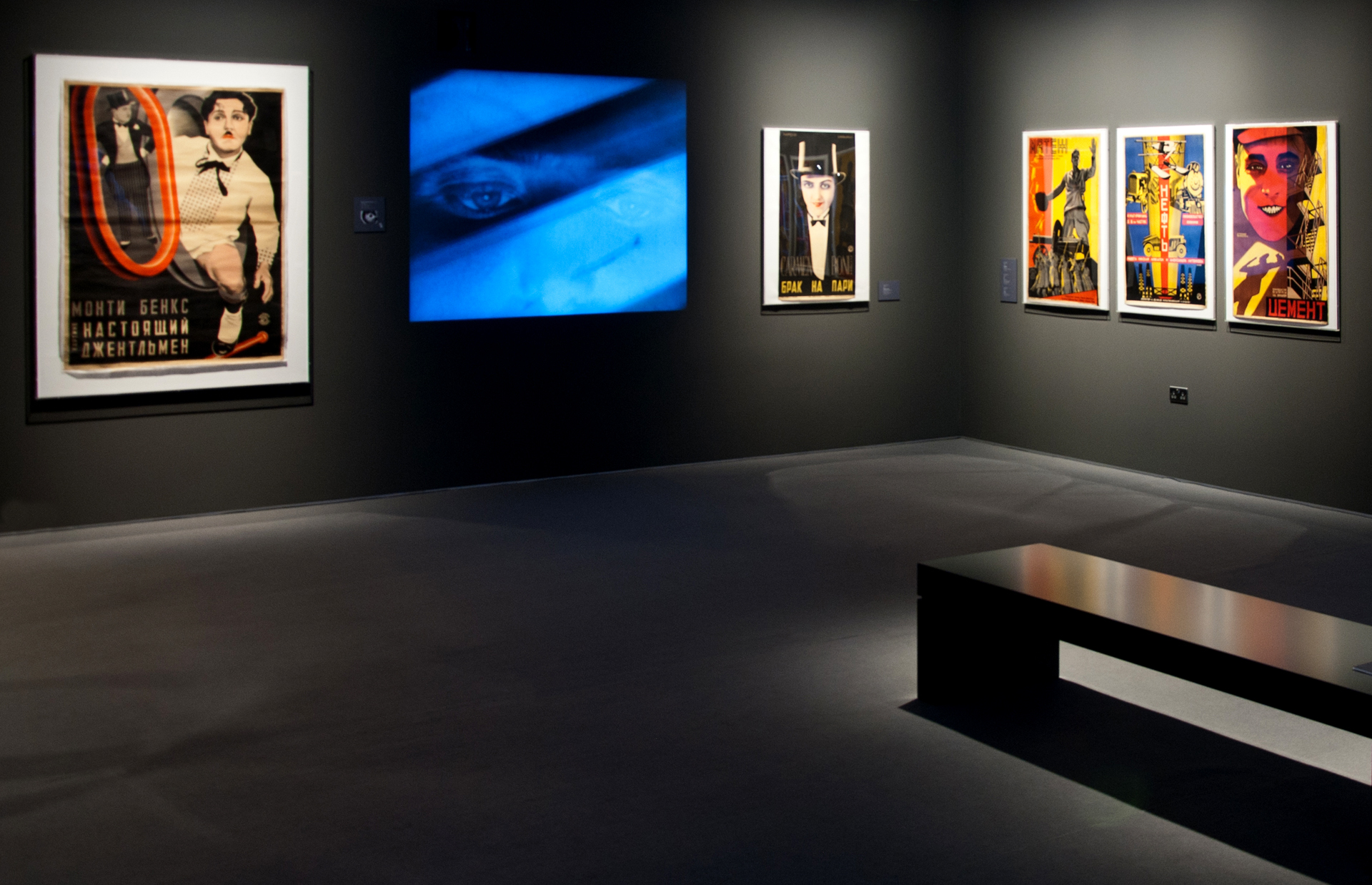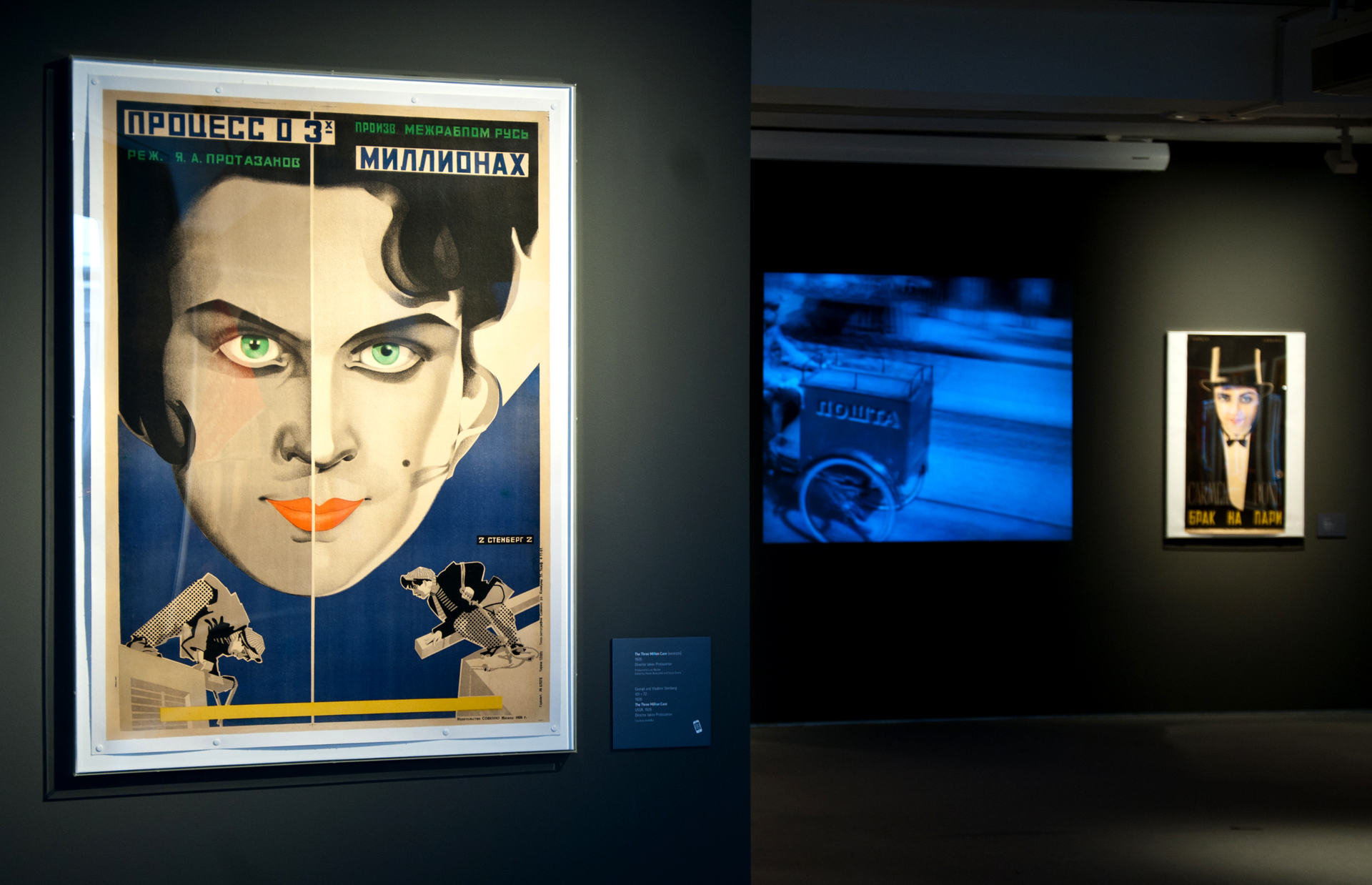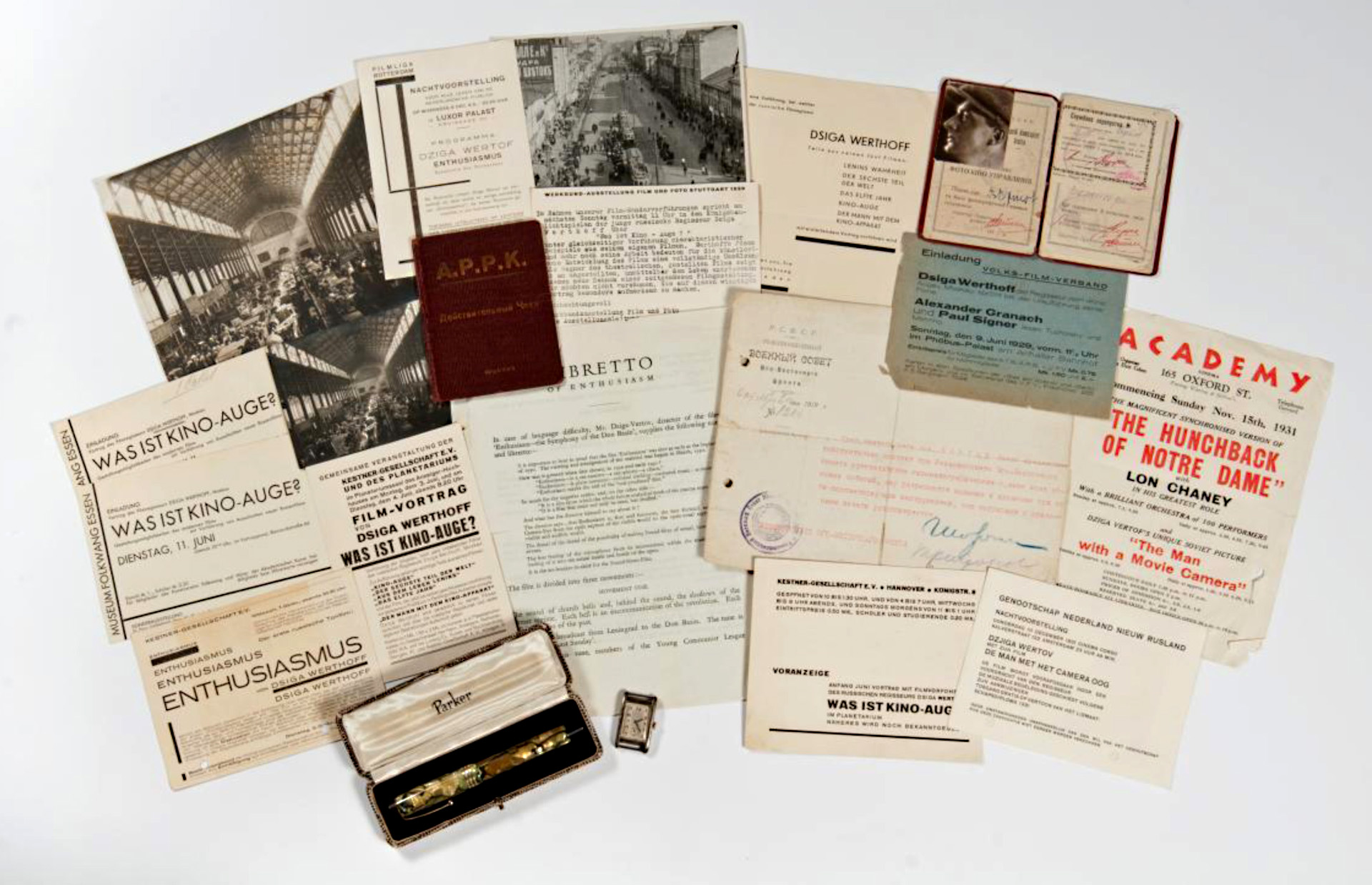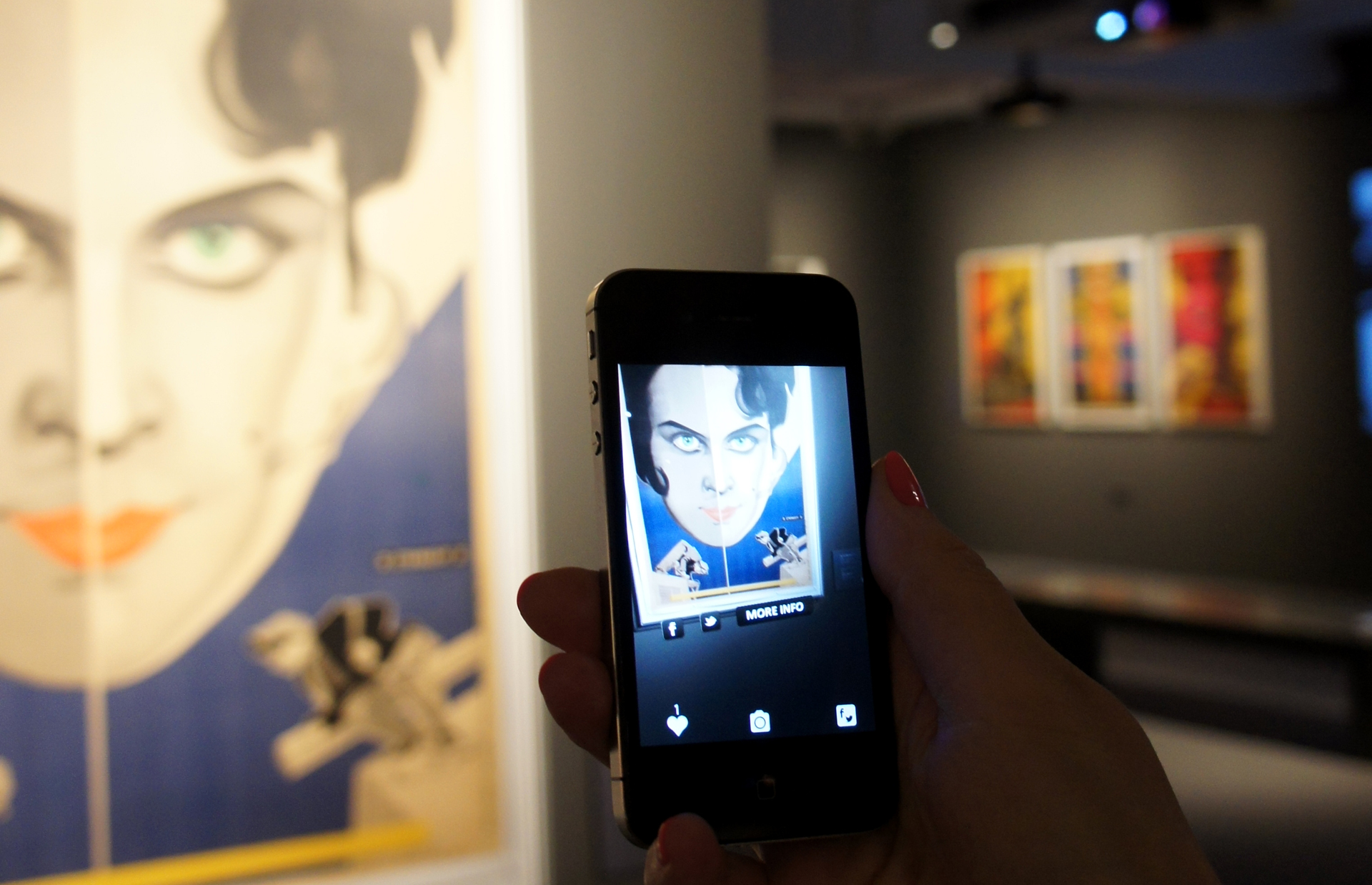Kino/Film: Soviet Posters of the Silent Screen
17 January — 29 March 2014
FREE ENTRY
Curated by Elena Sudakova and Lutz Becker
Exhibition design by Calum Storrie and Katya Sivers
Photographs by Henry Milner
Video by Louie Oestreicher
The 1920s saw the advent of new and radical graphic design created to advertise silent films across the Soviet Union. Film posters of this era have become masterpieces in their own right, produced at a time when innovative on-screen techniques were being incorporated into the design of advertisements. Some 25 works by the brothers Georgii and Vladimir Stenberg, Iakov Ruklevskii, Aleksandr Naumov, Mikhail Dlugach and Nikolai Prusakov, are on display.
During the mid- to late-1920s cinema flourished in the Soviet Union. A relatively new art form, film matched the revolutionary ethos of an emerging generation of artists for whom fine art was deemed bourgeois. The advantages of using film as a propaganda tool for the largely illiterate masses were not lost on the government, who supported the burgeoning film industry. A state-controlled organisation, Sovkino, managed the distribution of foreign films, including those from the US which were very popular; profits were used to subsidise domestic film production. These Soviet films soon gained an international reputation through feature-length masterworks such as Battleship Potemkin.
Under the umbrella of Sovkino, Reklam Film was the department that controlled the production of film posters across the USSR and at its helm was designer Iakov Ruklevskii, who engaged a number of talented young artists. They created a whole new visual vocabulary for film posters, both foreign and domestic, incorporating the practices they saw on-screen. As the films were black and white, the designers employed their artistic licence to great effect, using vivid colour blocking and dynamic typographical experiments to capture the essence of each production, sometimes without having even seen it. The result is a body of work which is both powerful and enduring.
Projected alongside the posters are excerpts of seminal films, including October, The End of St Petersburg and Storm Over Asia, showcasing the innovative techniques employed by the poster artists and film-makers of this era, and highlighting the symbiotic relationship between the pioneering vision of directors such as Sergei Eisenstein and Vsevolod Pudovkin and the output of the poster artists engaged to promote them. Techniques such as cinematic montage, repetition, asymmetric viewpoints and dramatic foreshortenings were used in the creation of both the films and the posters, leading to the appearance of a distinctive and highly influential body of design. Mass produced during the 1920s, the posters were made for one use only and few originals survive. The exhibition at GRAD is a rare opportunity to see these seminal works, many of which have not been exhibited in the UK before.
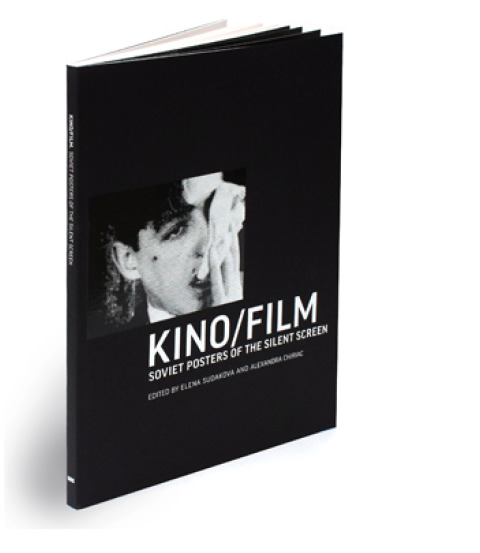
|
‘Kino/Film: Soviet Posters of the Silent Screen‘Edited by Elena Sudakova and Alexandra Chiriac
Published to accompany the exhibition ‘Kino/Film: Soviet Posters of the Silent Screen’ (17 January — 29 March 2014)
This publication brings together the distinctive graphics of 1920s Soviet film posters, informative essays and detailed artist biographies. Richly illustrated, it features works by the brothers Georgii and Vladimir Stenberg, Iakov Ruklevskii, Aleksandr Naumov, Mikhail Dlugach, Nikolai Prusakov and others. Book Contents: ‘Kino: Revolution, Film and Design’ by Lutz Becker ‘Soviet Cinema and the Age of Mechanical Reproduction’ by Alexandra Chiriac Biographies of Film Directors Biographies of Film Poster Designers If you would like to purchase this publication please contact GRAD |
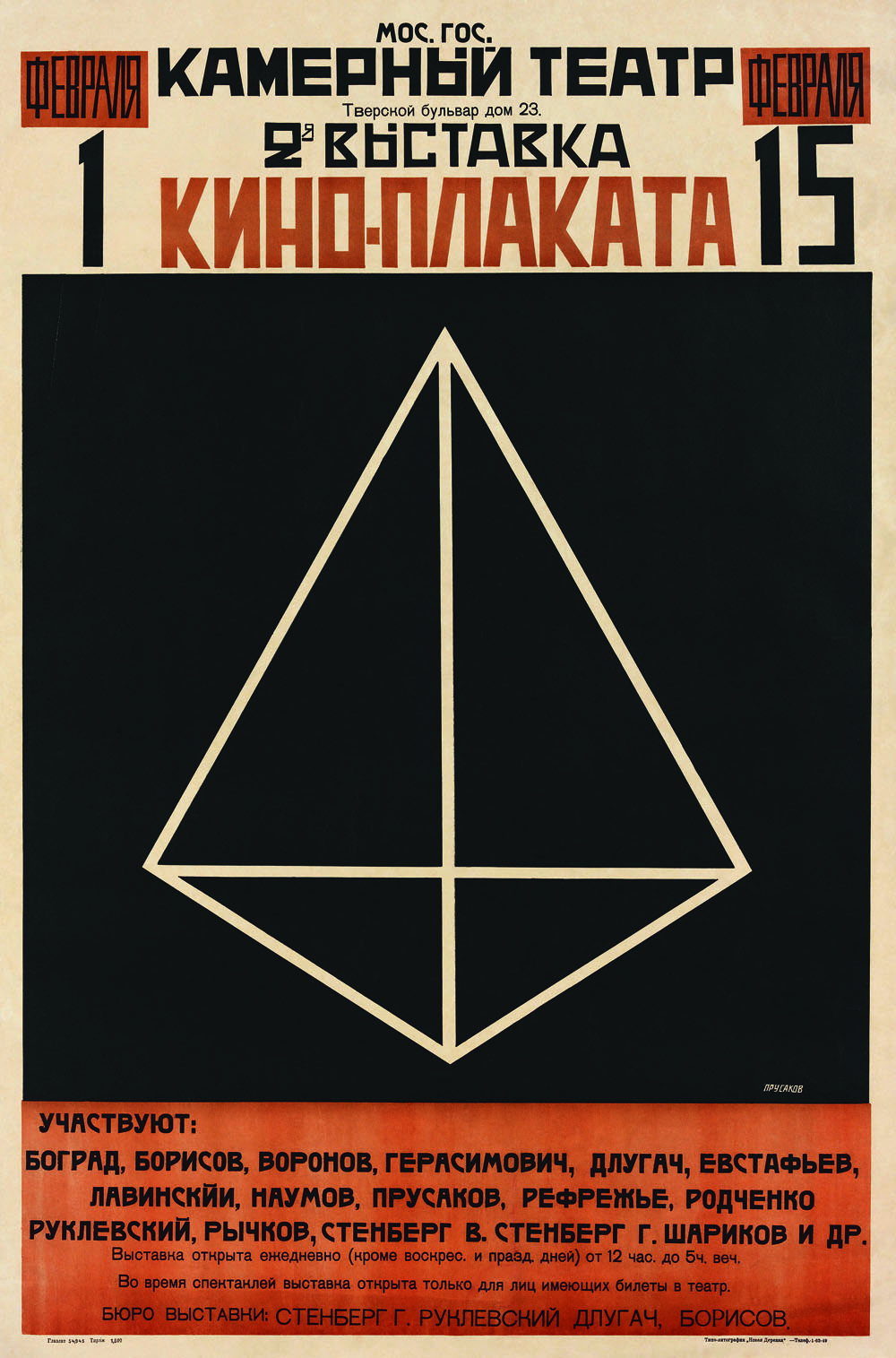
The Second
Exhibition of Film
Posters
108.5 × 71.5
1926
A3 £30, A1 £75

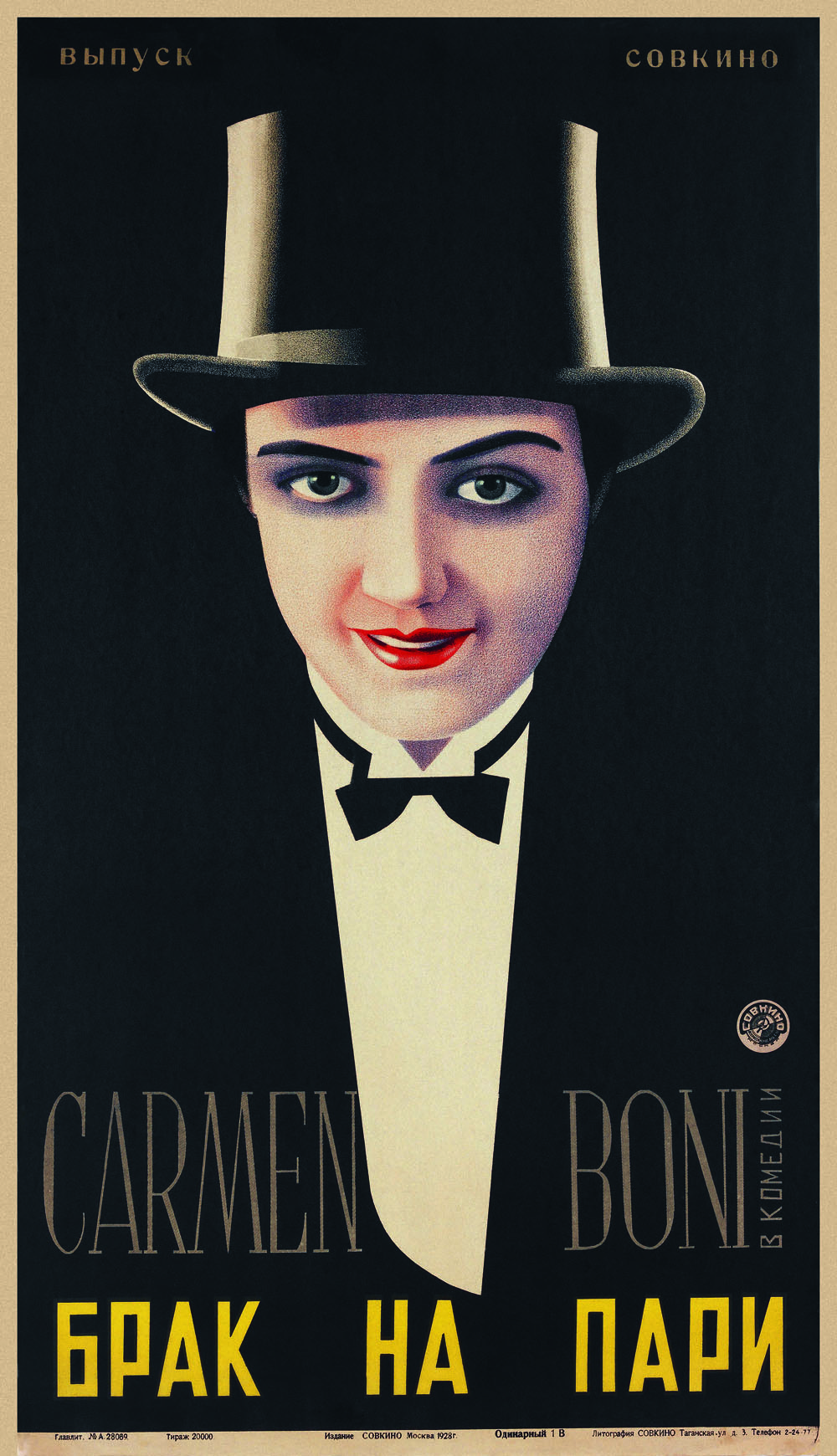
Marriage on a Bet
108 × 60
1928
Original title Liebeskarneval
Germany, 1928
Director Augusto Genina
A3 £30, A1 £75
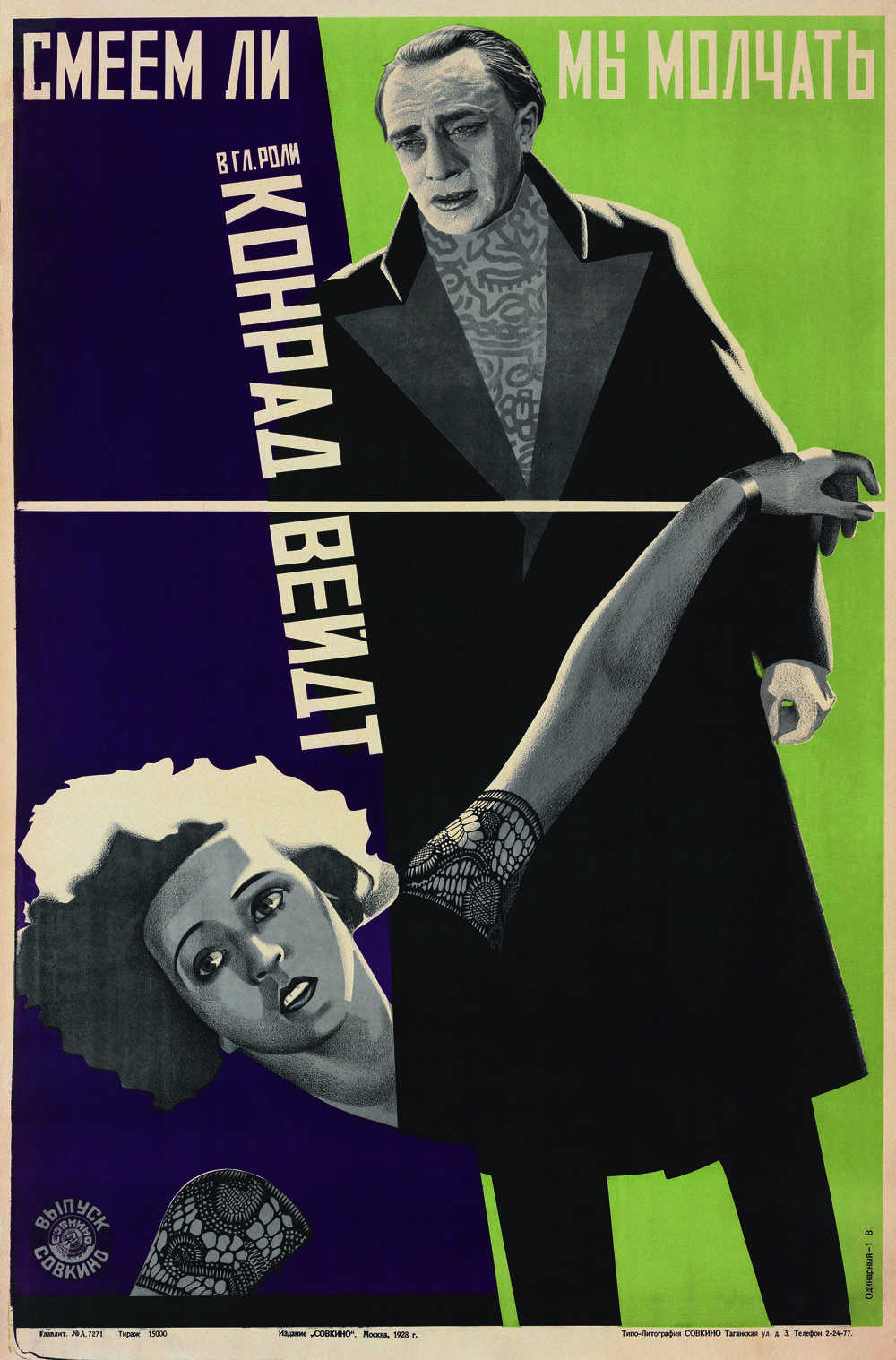
Dare We Stay Quiet
108 × 72.5
1926
Original title Durfen wir schweigen?
Germany, 1926
Director Richard Oswald
A3 £30, A1 £75
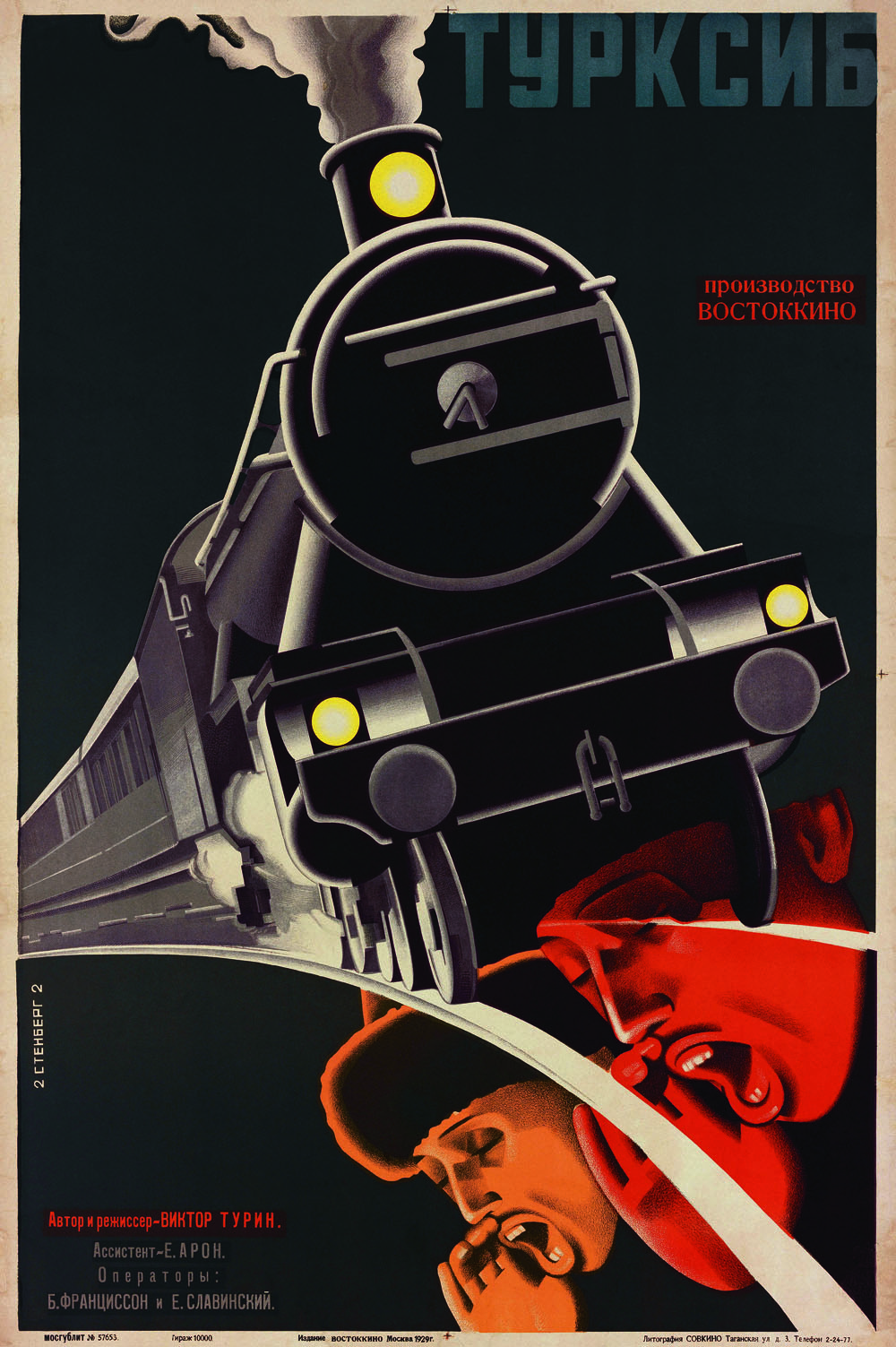
Turksib
109 × 71.5
1926
USSR, 1926
Director Viktor Turin
A3 £30, A1 £75

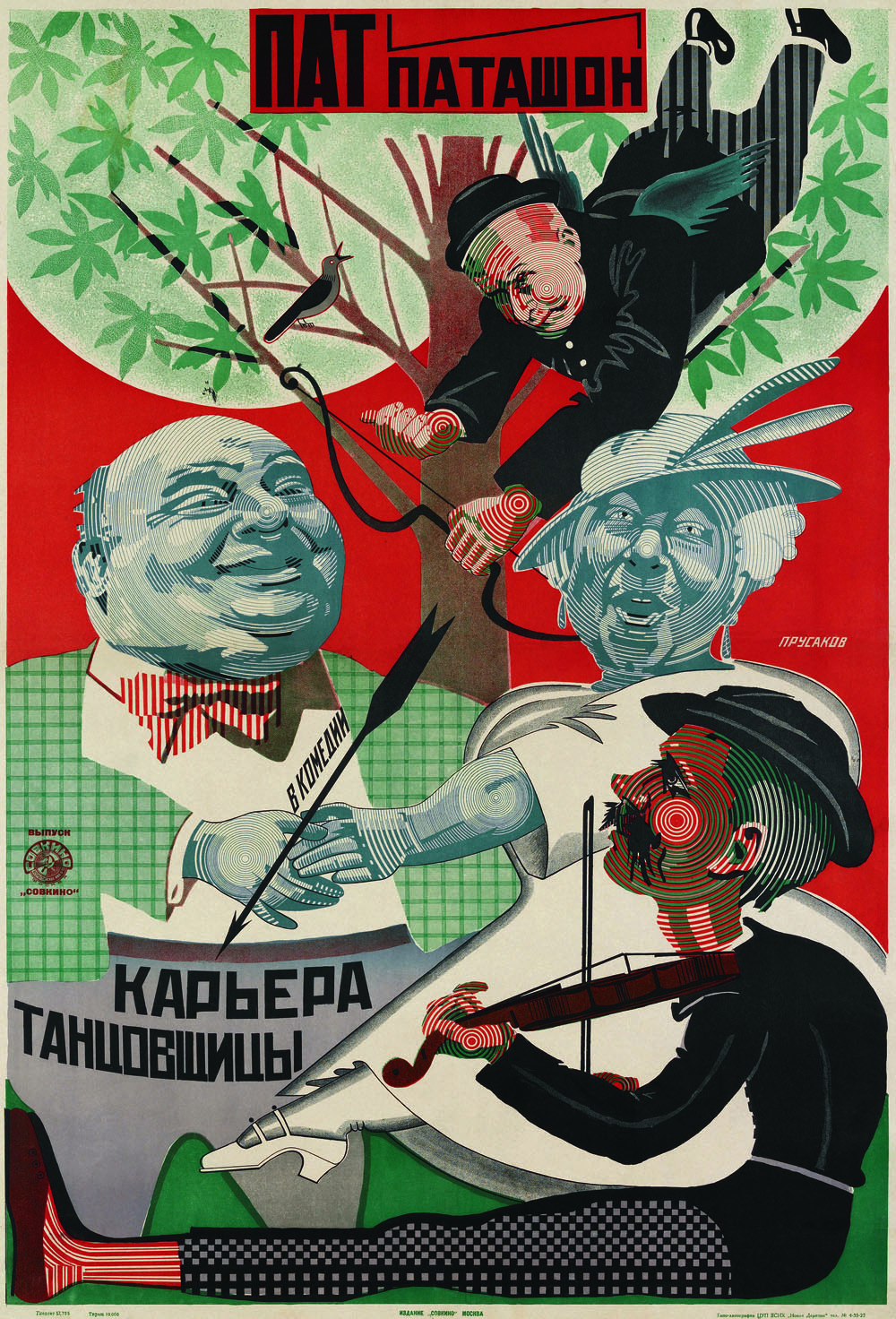
A Dancer’s Career
104.5 × 72
1924
Original title Lille Lise Let-Paa Taa
Denmark, 1924
Director Lau Lauritzen
A3 £25, A1 £60
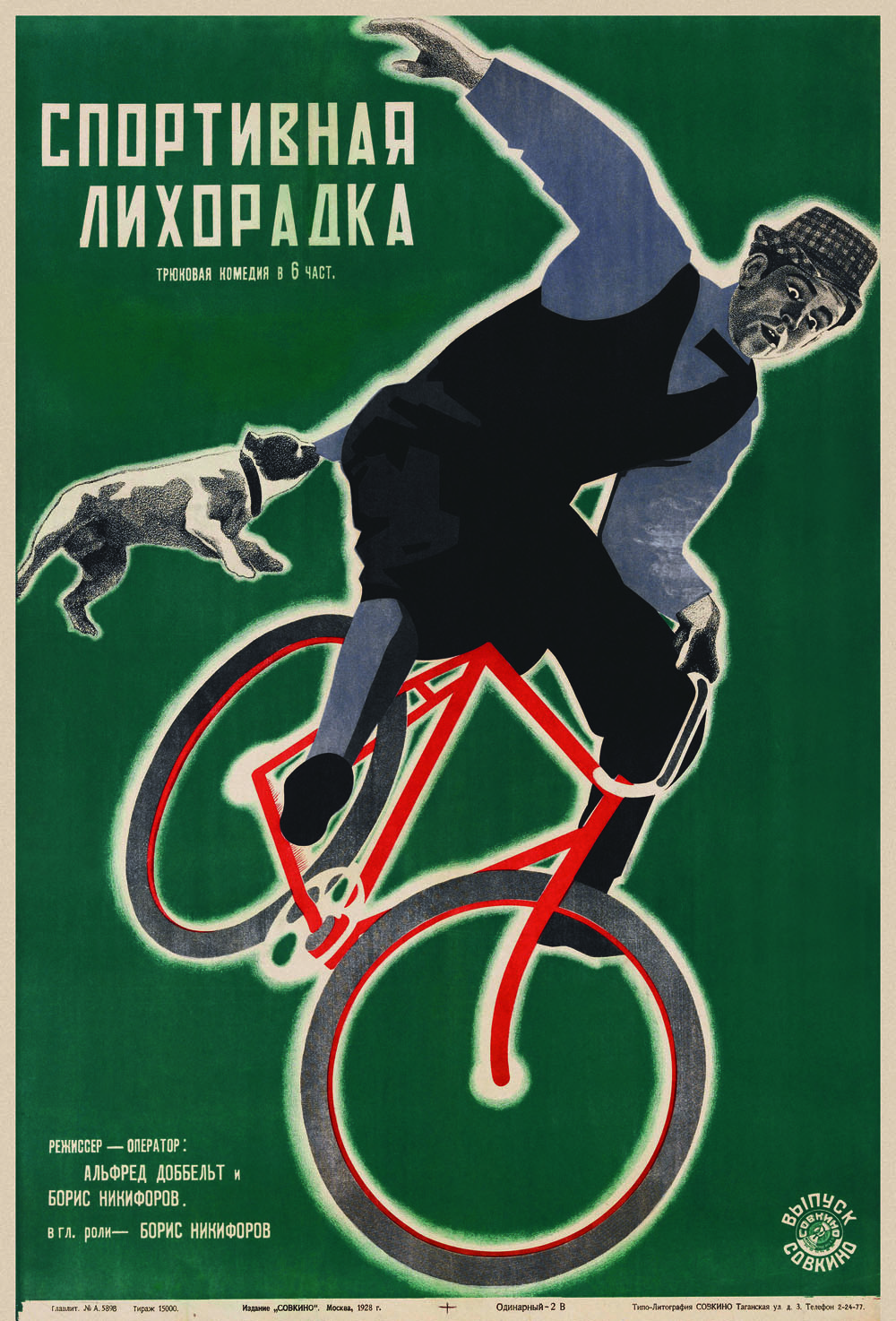
Sport Fever
109 × 74
c. 1928
USSR, 1928
Directors Alfred Dobbelt
and Boris Nikiforov
A3 £30, A1 £75
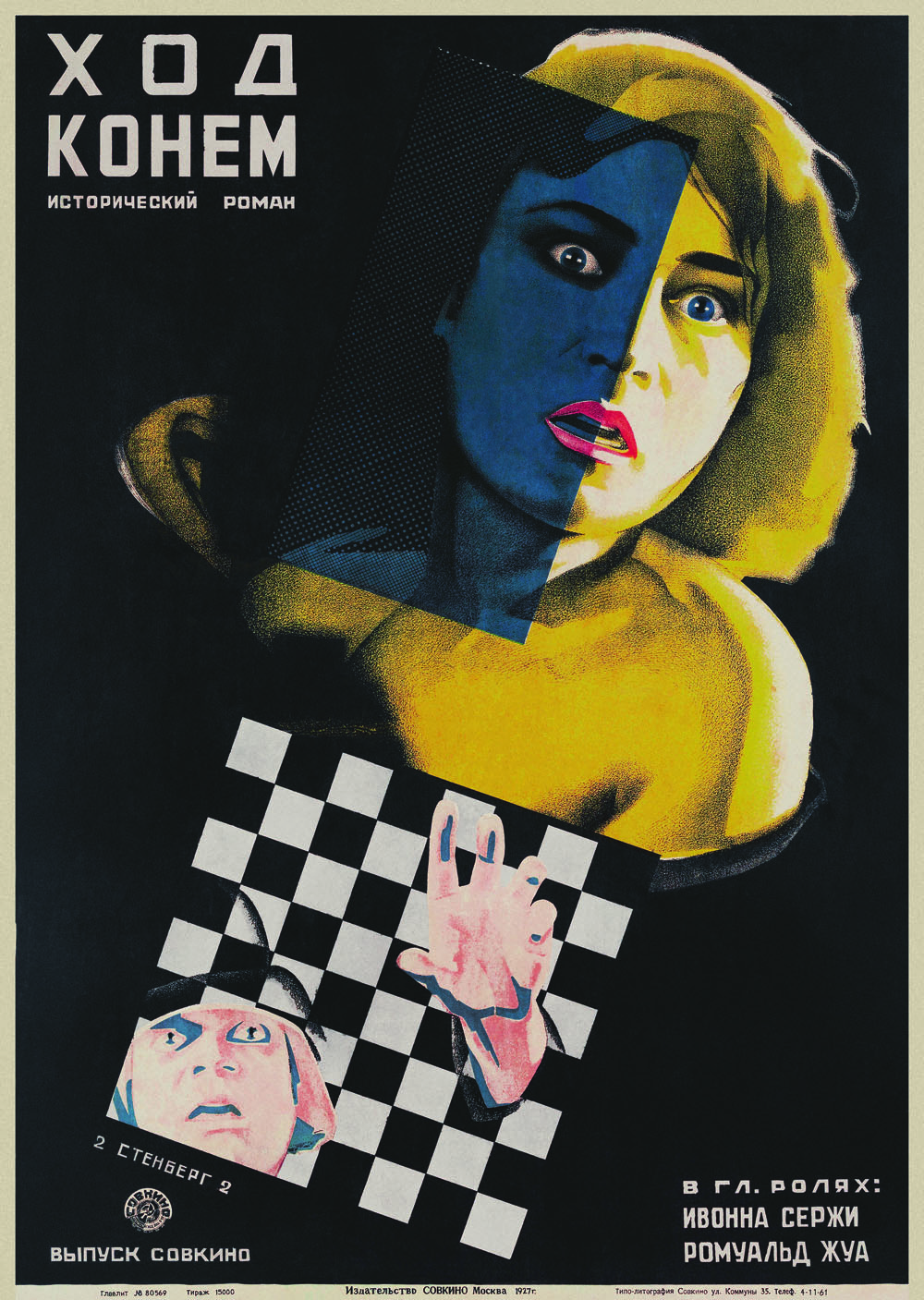
Knight’s Move
101.5 × 72
1927
Original title Le Miracle des Loups
France, 1927
Director Raymond Bernard
A3 £30, A1 £75
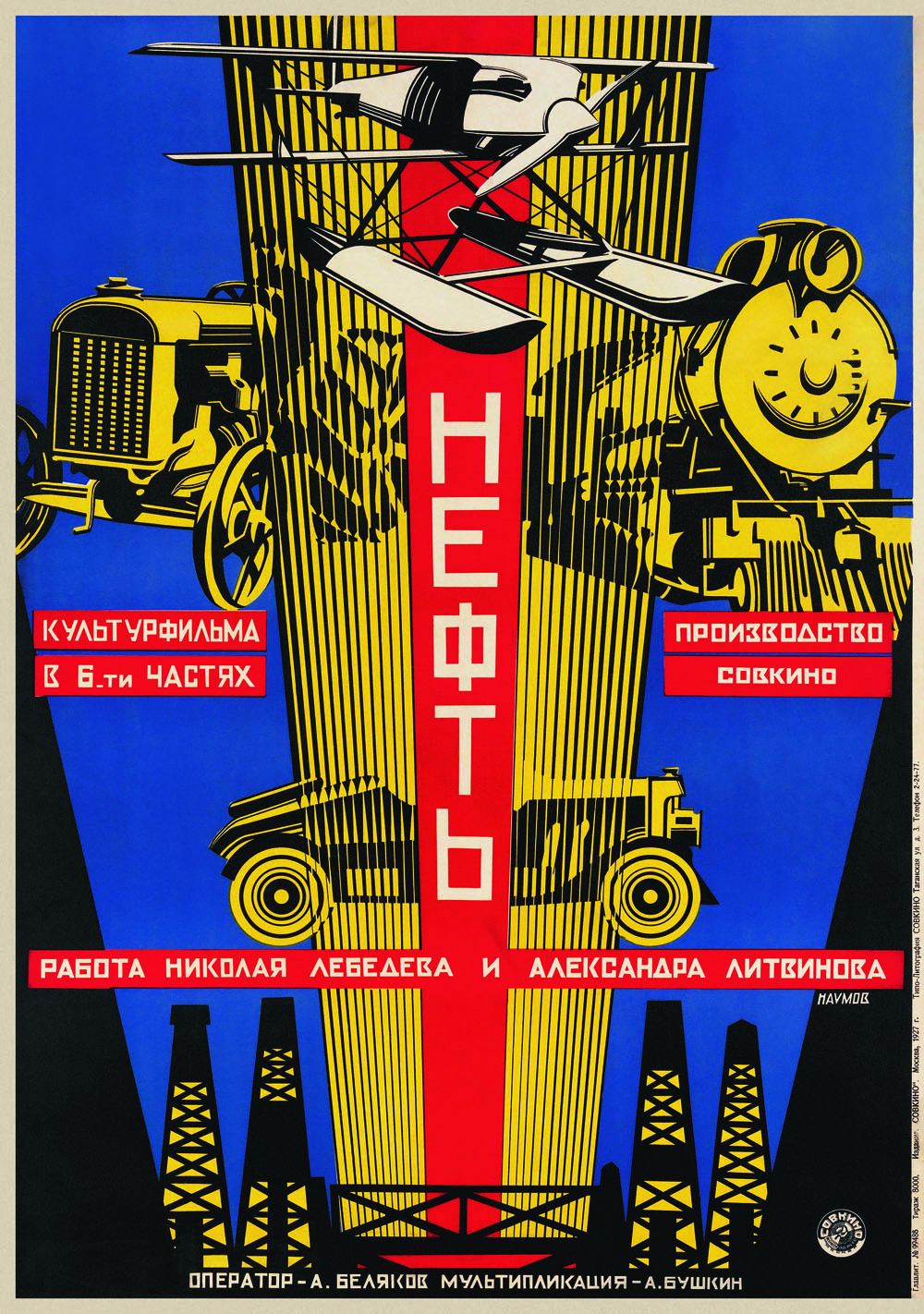
Oil
101 × 70.5
1927
USSR, 1927
Directors Nikolai Lebedev and Aleksandr Litvinov
A3 £30, A1 £75
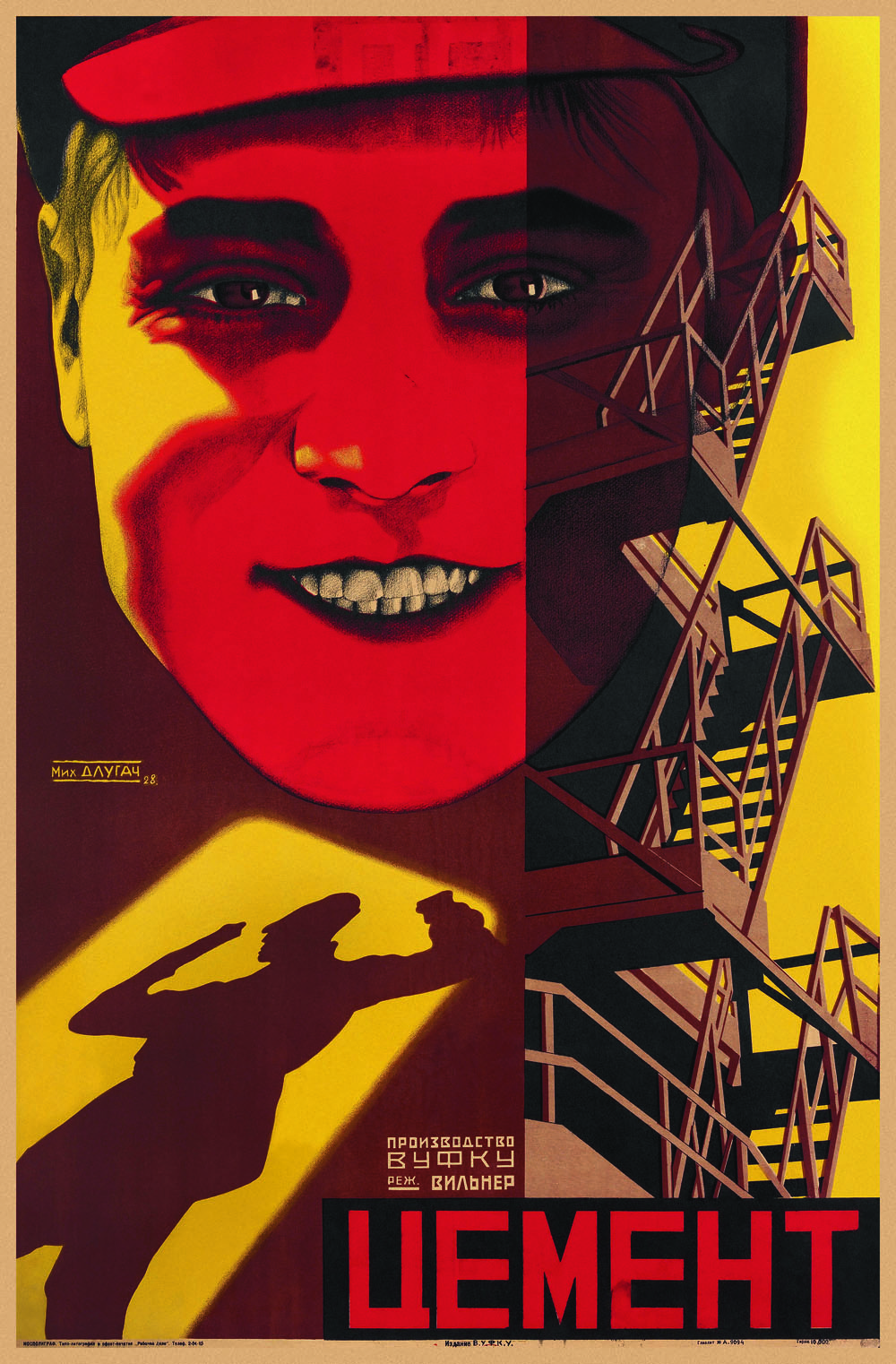
Cement
106.5 × 71
1928
USSR, 1928
Director Vladimir Vilner
A3 £30, A1 £75
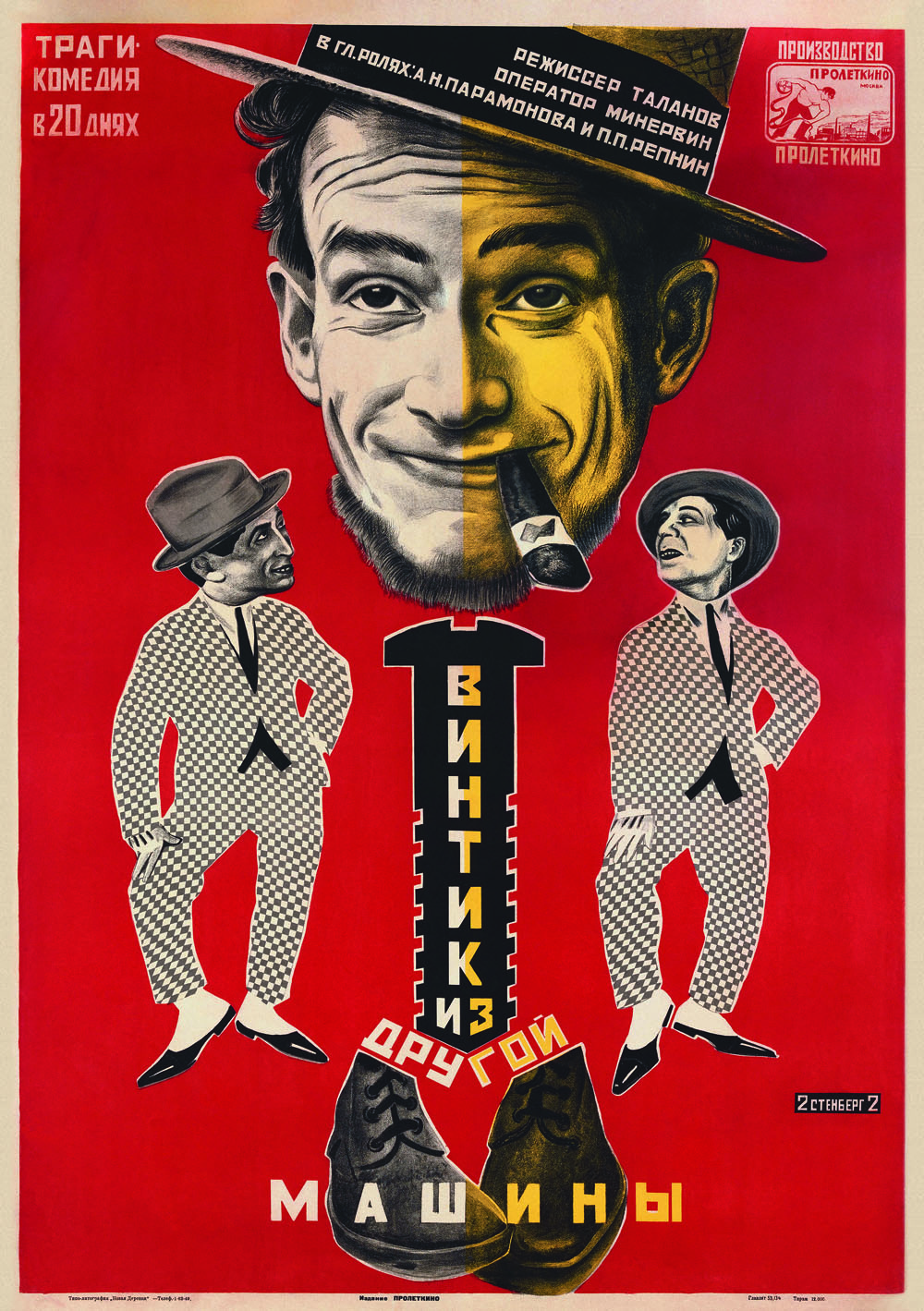
The Screw from Another Machine
109 × 73.5
c. 1928
USSR, c. 1928
Director Aleksandr Talanov
A3 £30, A1 £75
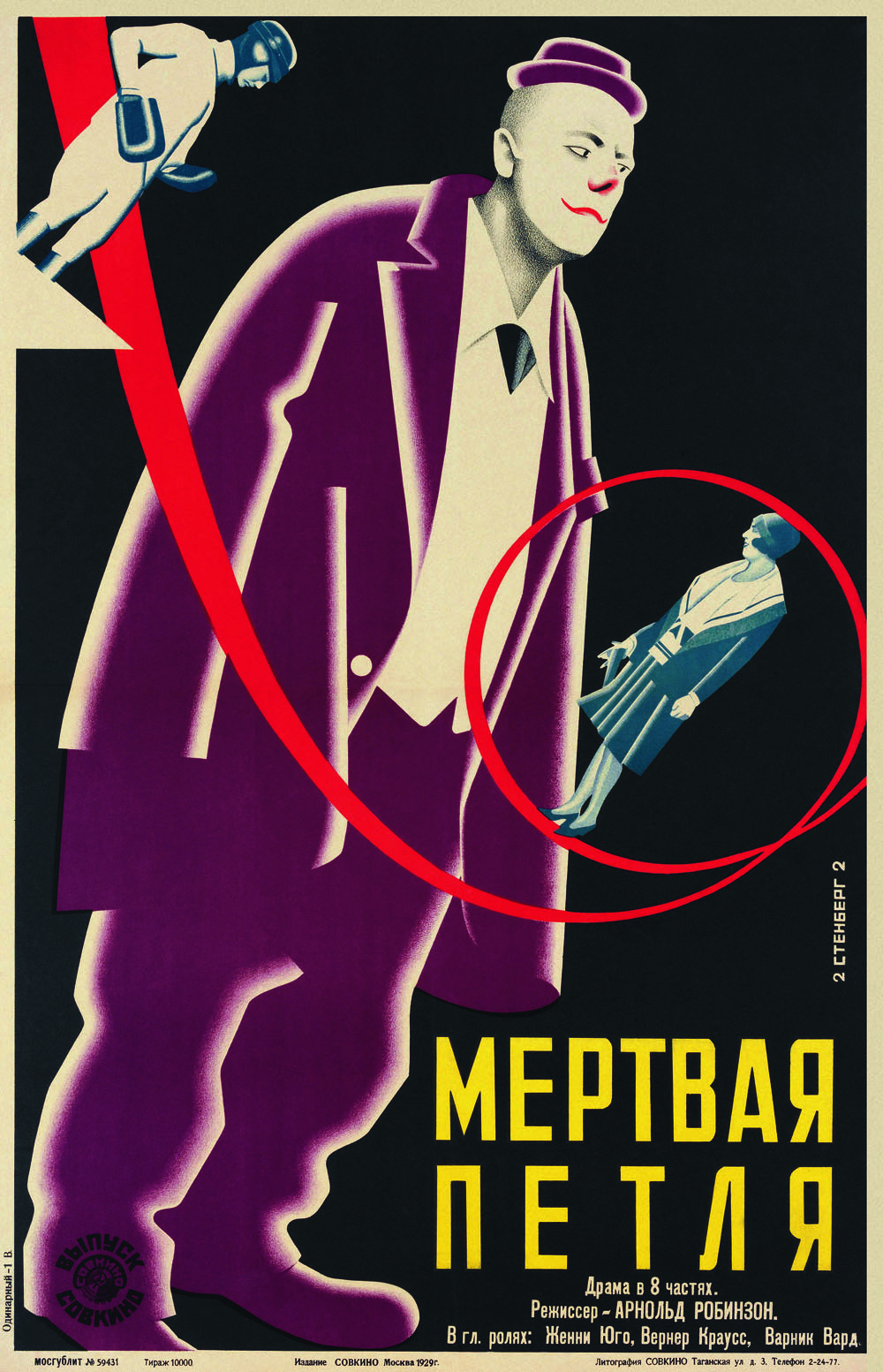
Death Loop
94 × 62
1929
Original title Die Todesschleife
Germany, 1928
Director Arthur Robison
A3 £30, A1 £75
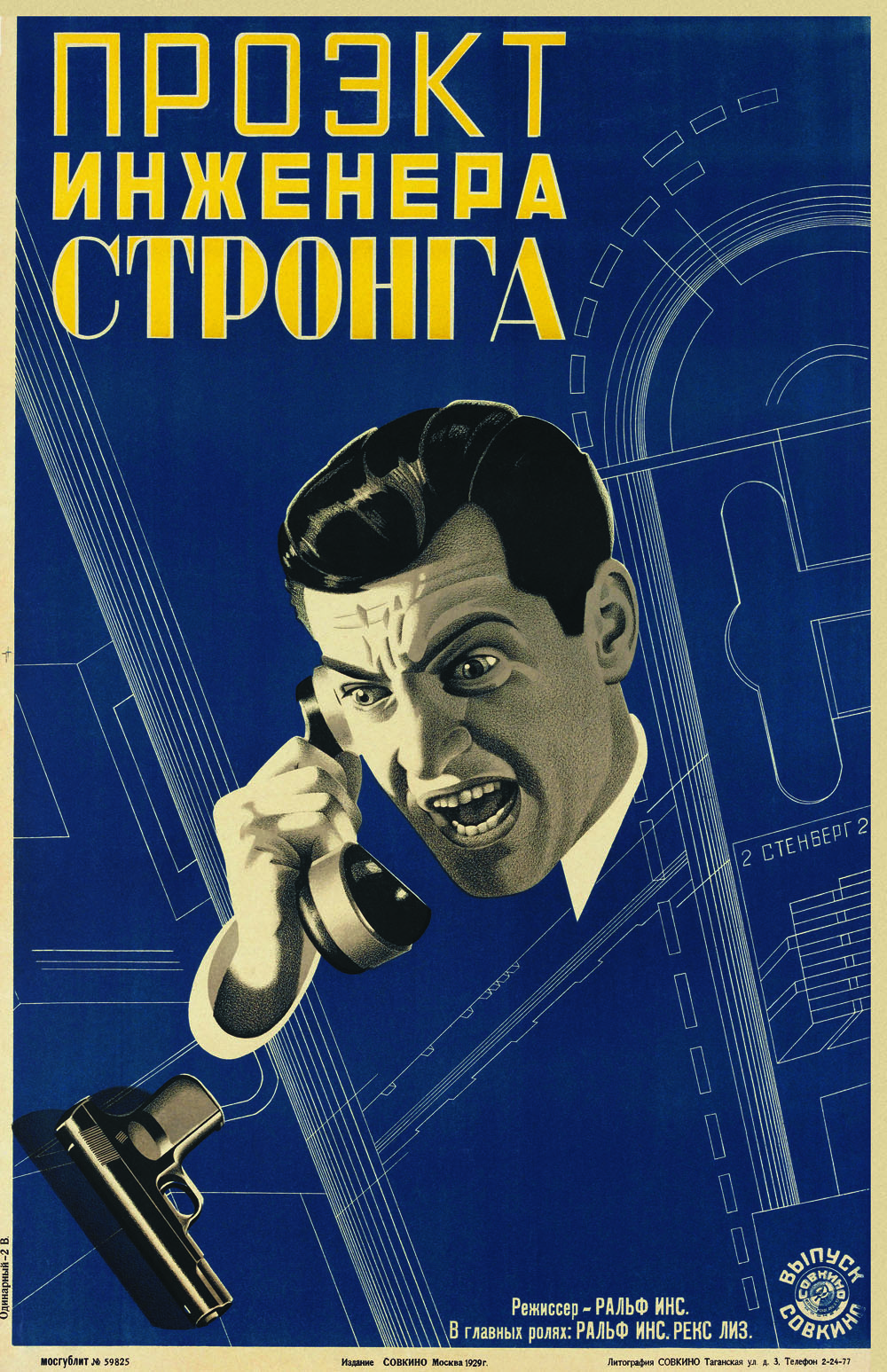
Engineer Strong’s Project
95 × 63
1929
Original title Not for Publication
USA, 1927
Director Ralph Ince
A3 £25, A1 £60
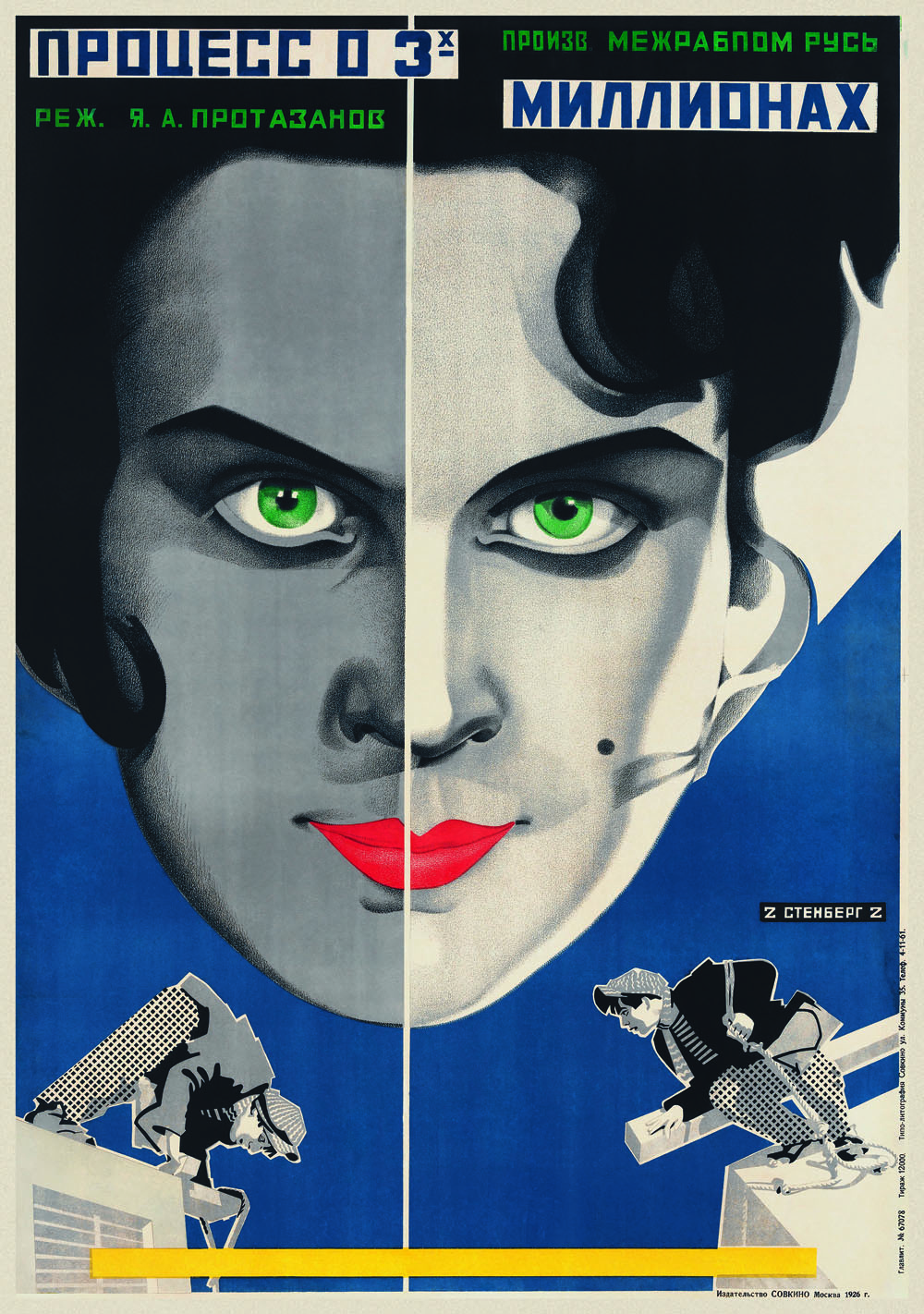
The Three Million Case
101 × 72
1926
Original title Not for Publication
USSR, 1926
Director Aleksandr Talanov
A3 £30, A1 £75

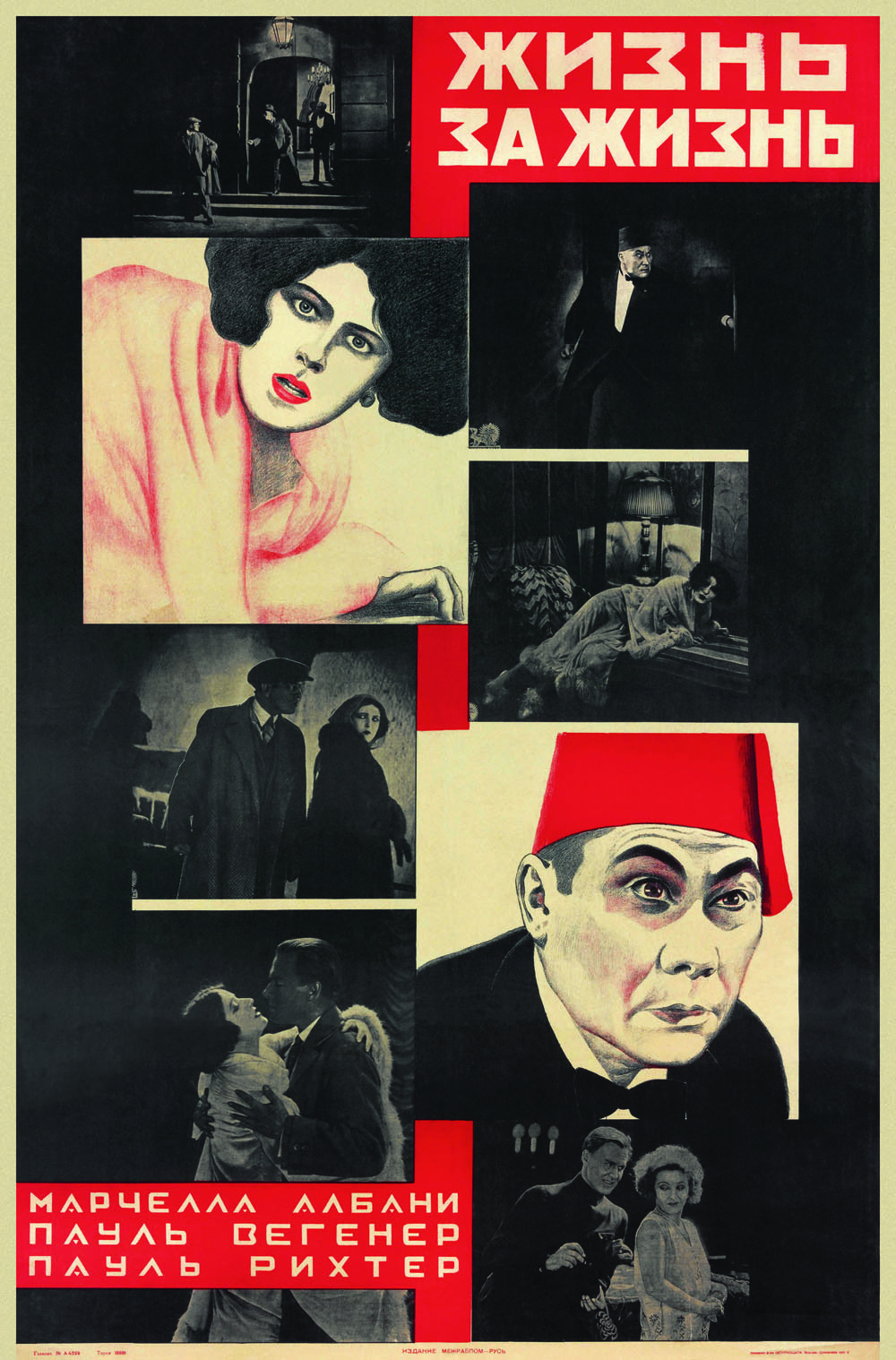
A Life for a Life
108 × 71
c. 1926
Original title Dagfin
Germany, 1926
Director Joe May
A3 £30, A1 £75
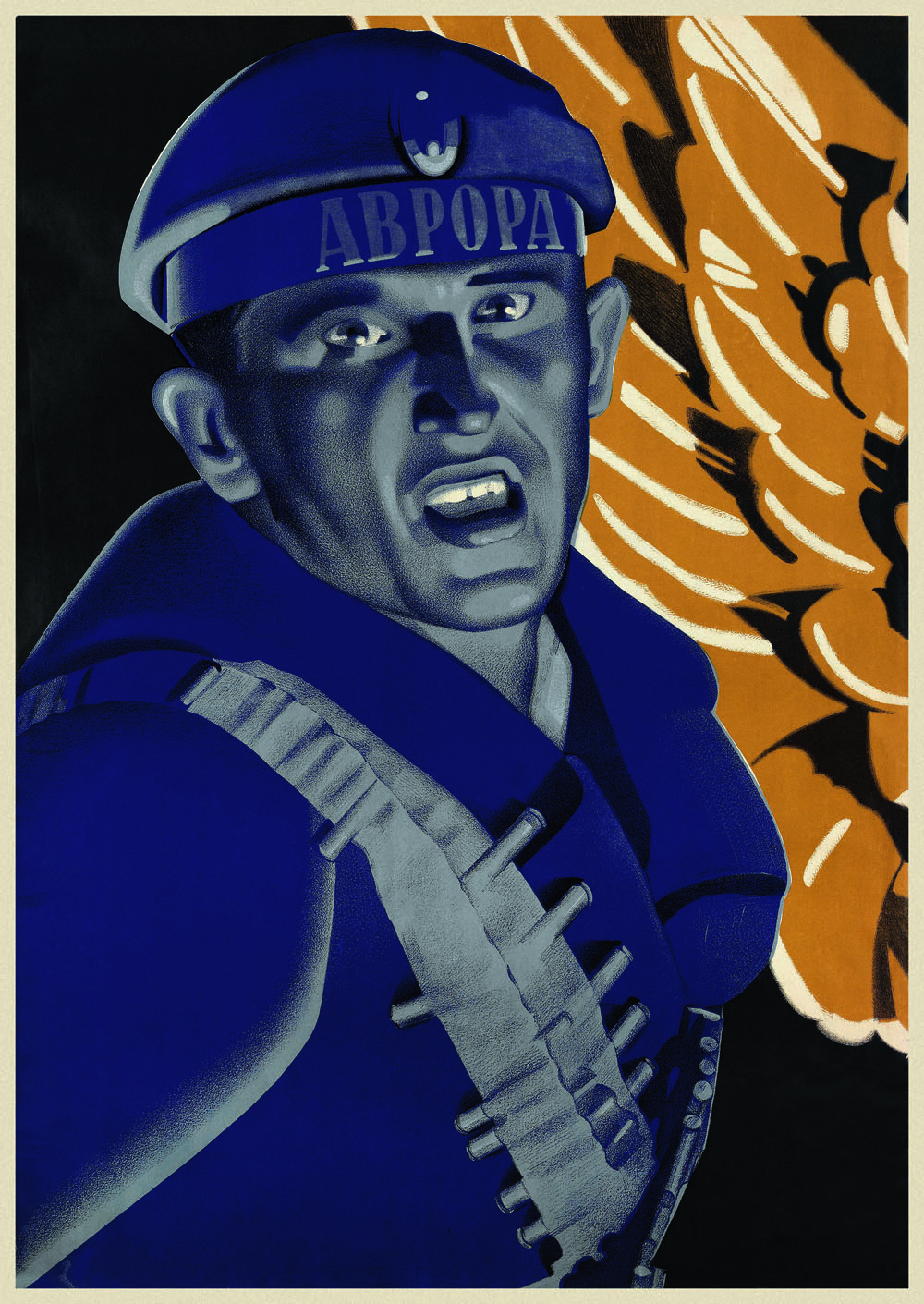
October
107 × 71
(one of eight parts)
1927
USSR, 1926
Directors Grigorii Aleksandrov,
Sergei Eisenstein
A3 £30, A1 £75

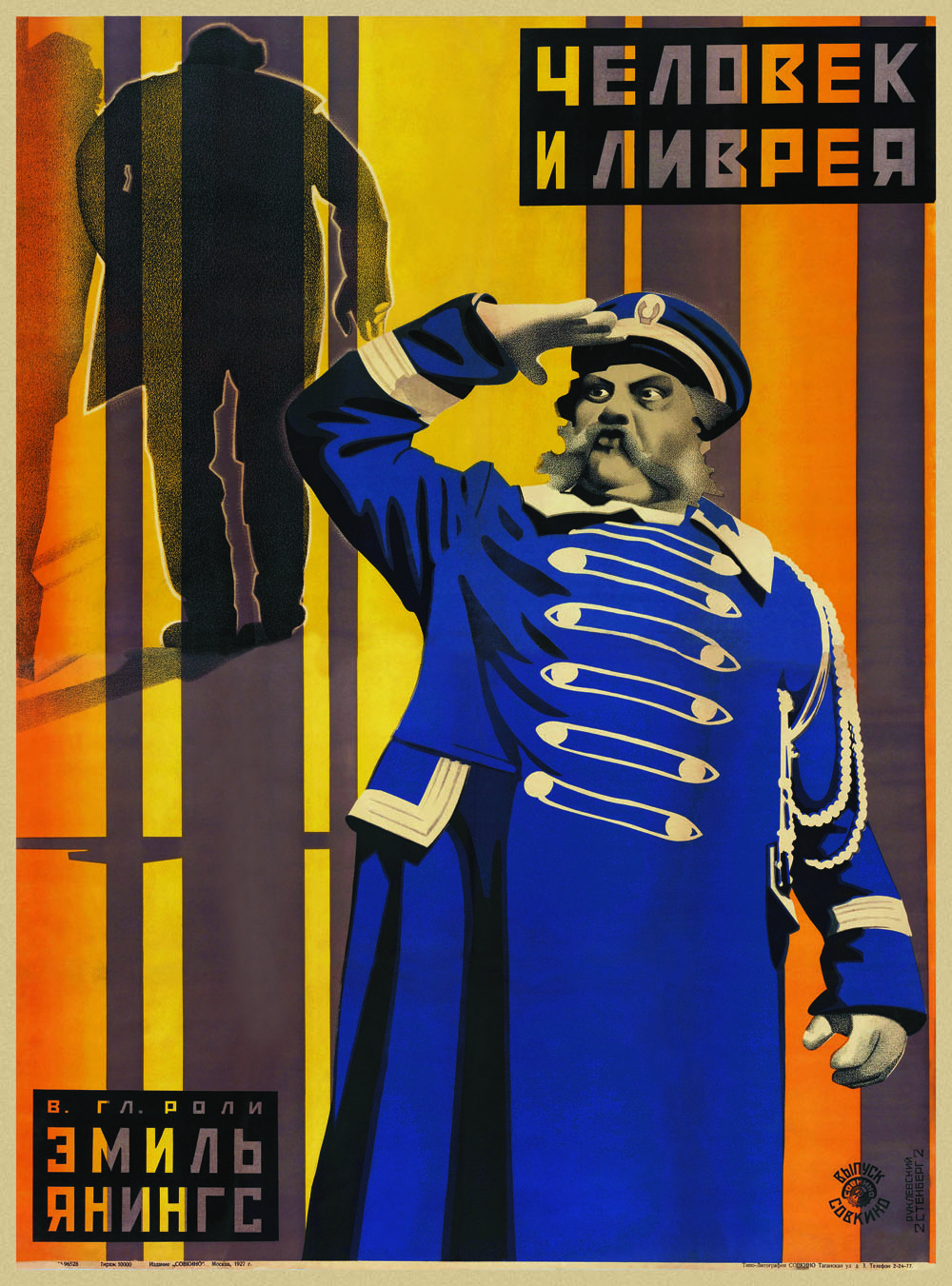
139 × 102
1927
Original title Der letzte Mann
Germany, 1924
Director Friedrich Wilhelm Murnau
A3 £30, A1 £75
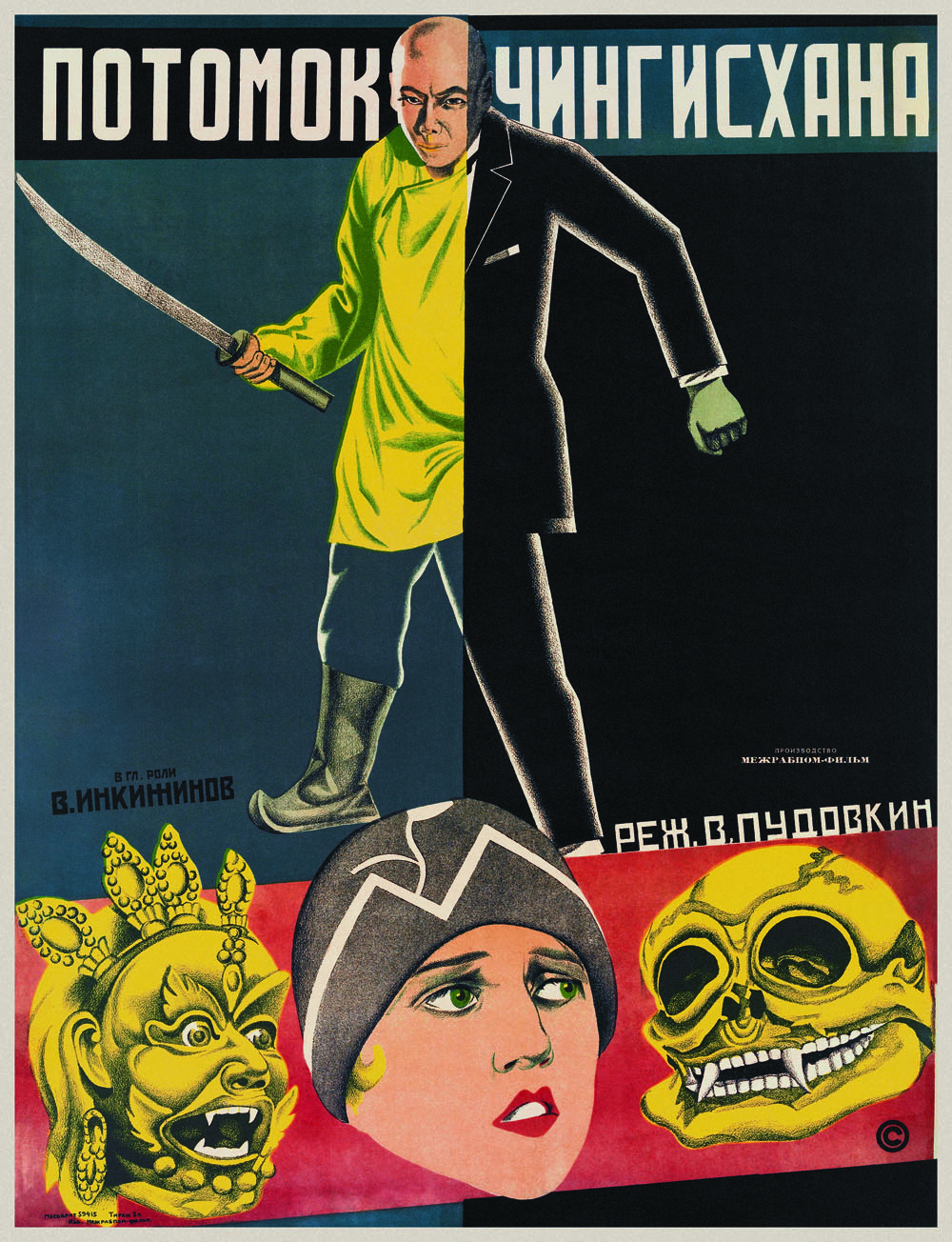
Storm over Asia
93.5 × 72.5
c. 1927
Original title The Heir of Genghis Khan
USSR, 1928
Director Vsevolod Pudovkin
A3 £30, A1 £75
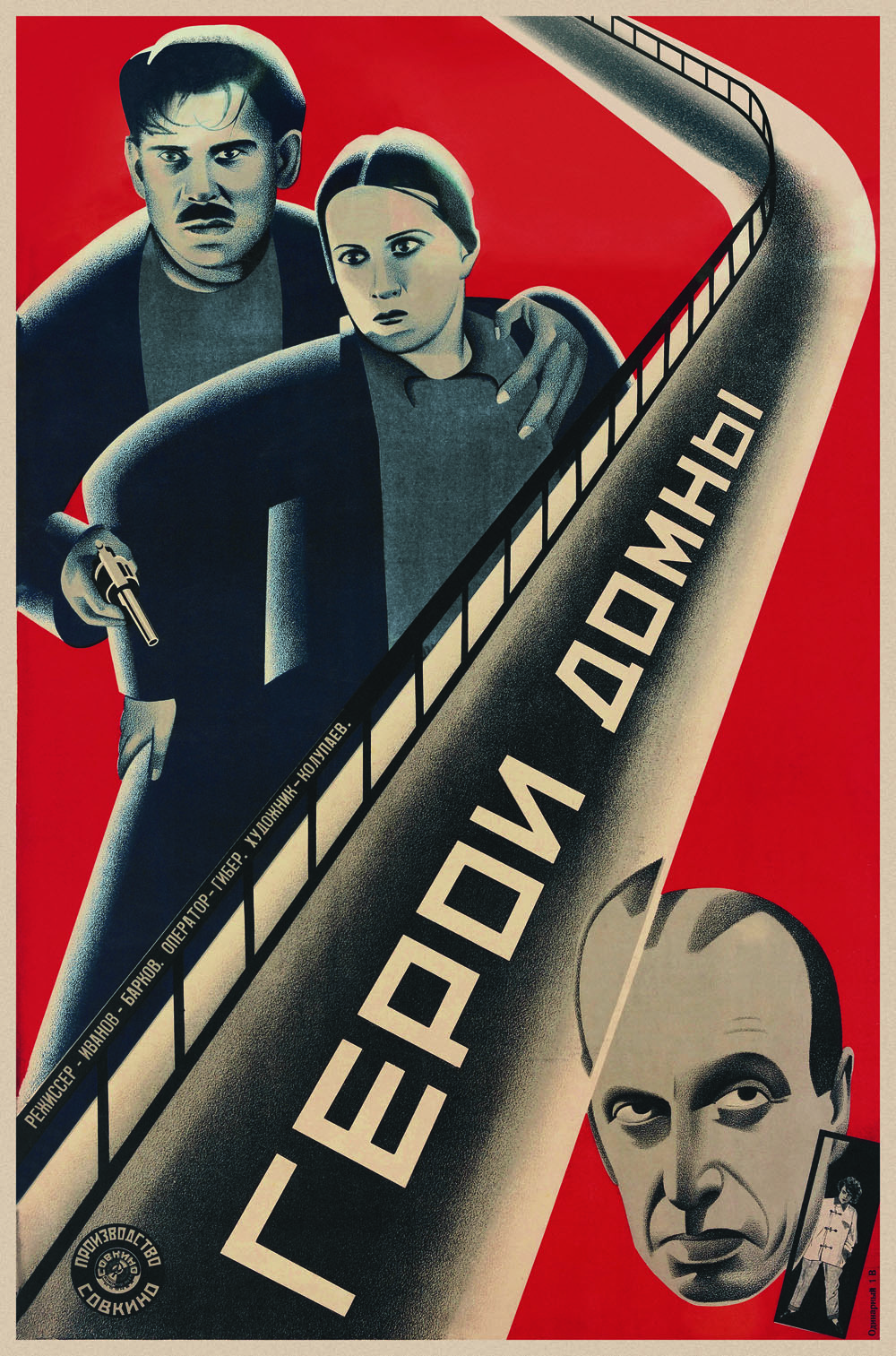
Heroes of the Blast Furnace
108.5 × 72.5
1928
USSR, 1928
Director Evgenii Ivanov-Barkov
A3 £30, A1 £75
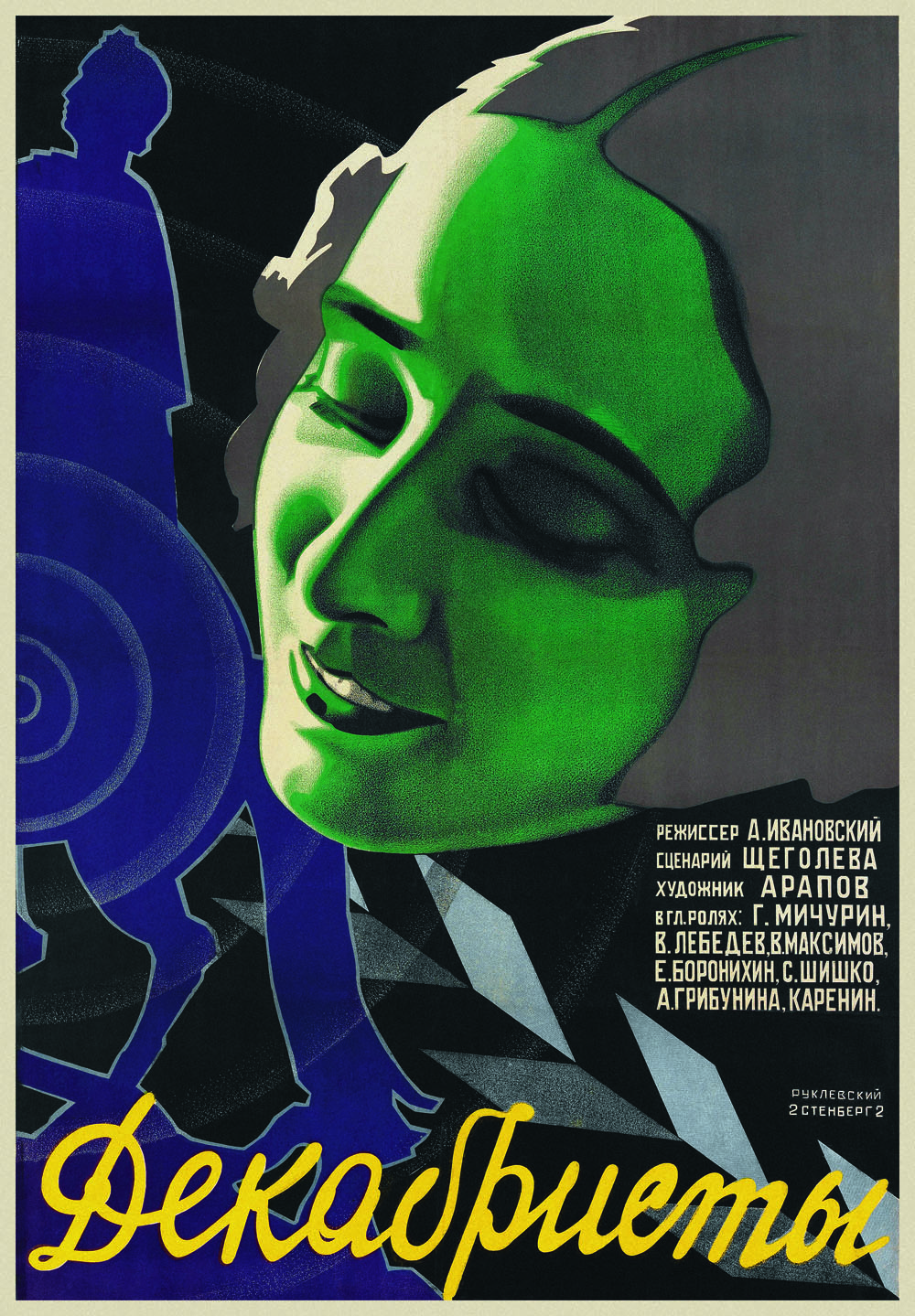
The Decembrists
109 × 72.5
1926
USSR, 1926
A3 £30, A1 £75
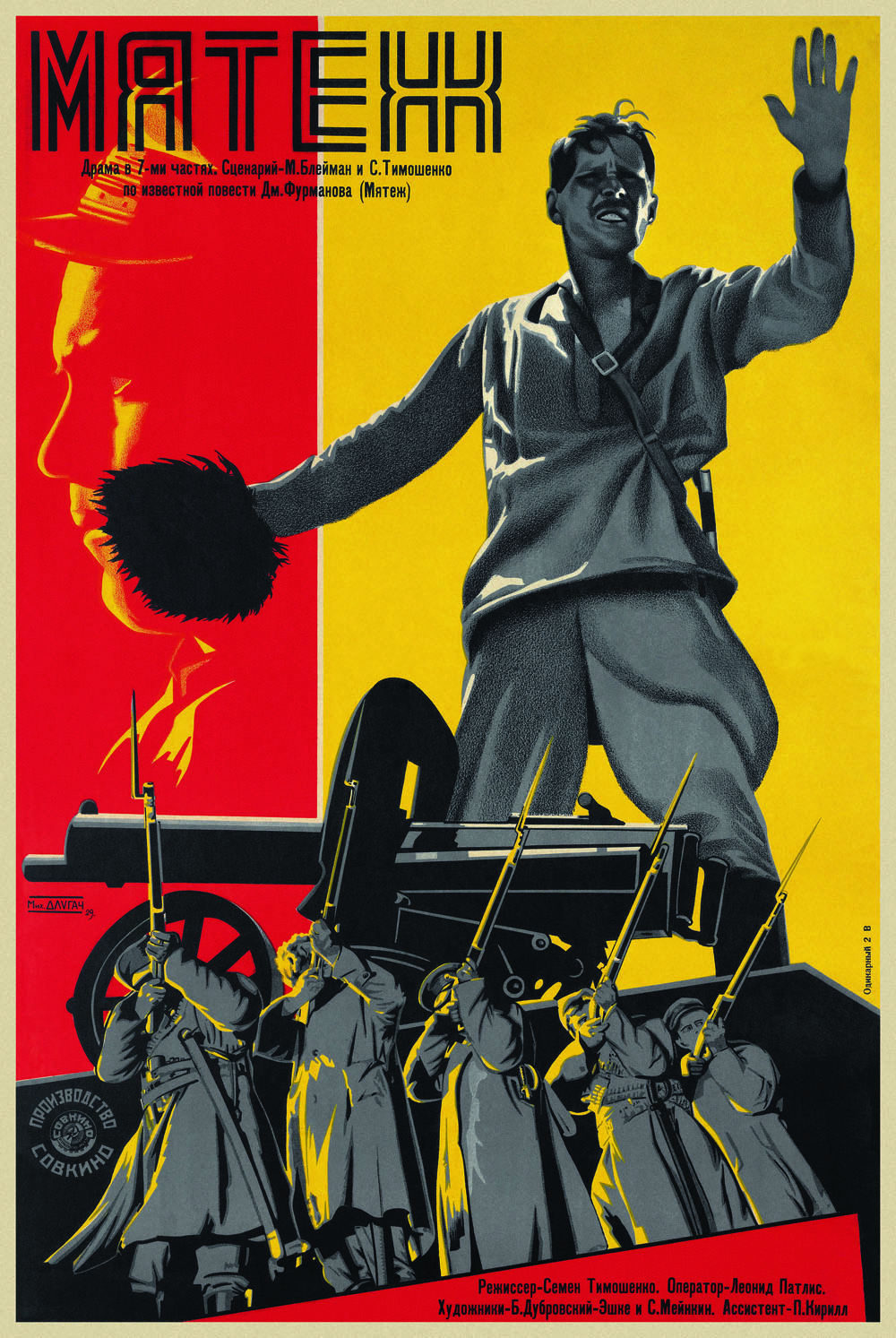
The Uprising
91 × 66.5
1935
USSR, 1935
Director Semën Timoshenko
A3 £30, A1 £75
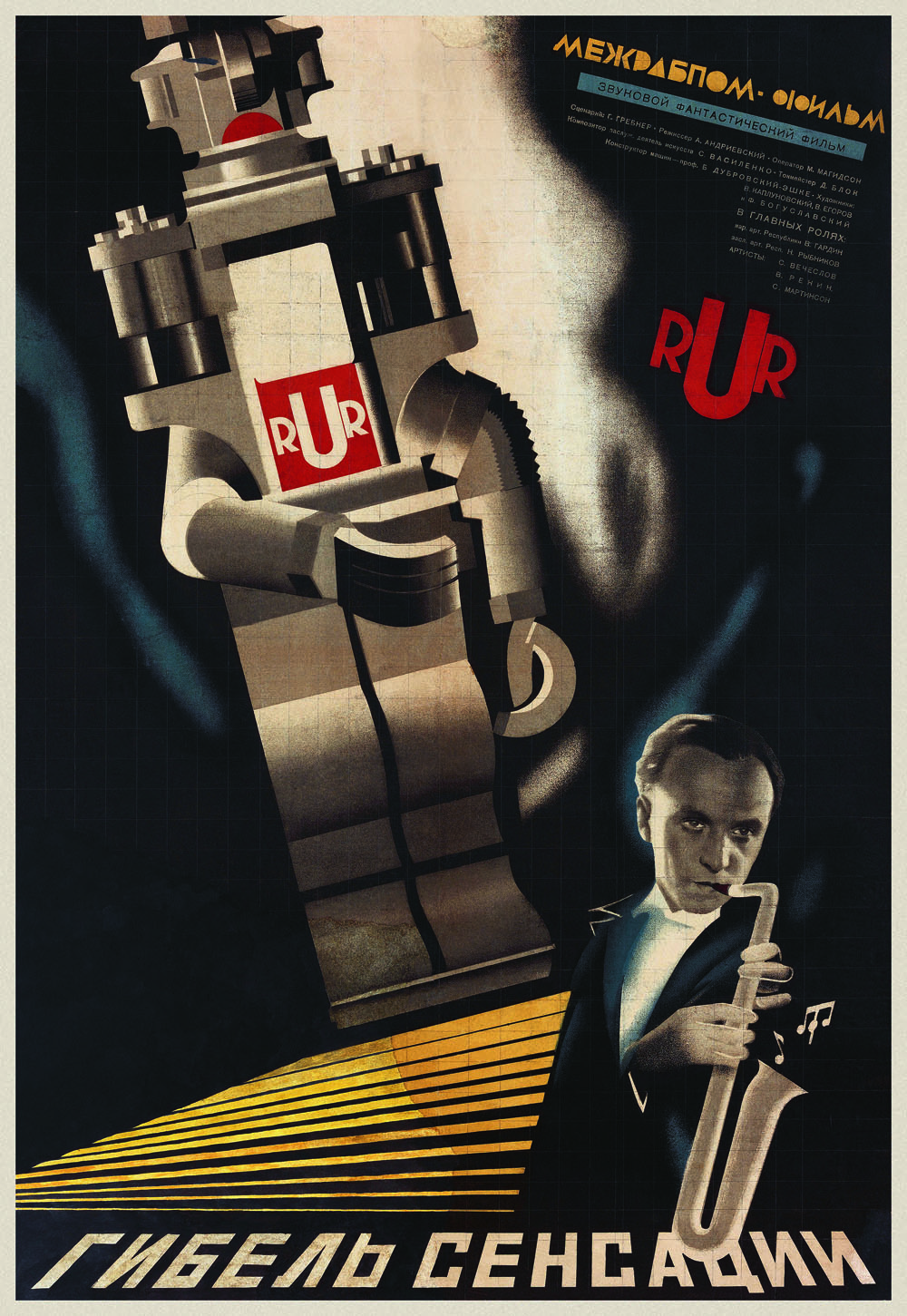
Death of Sensation
91 × 66.5
1935
Original title Durfen wir schweigen?
USSR, 1935
Director Aleksandr Andrievskii
A3 £30, A1 £75
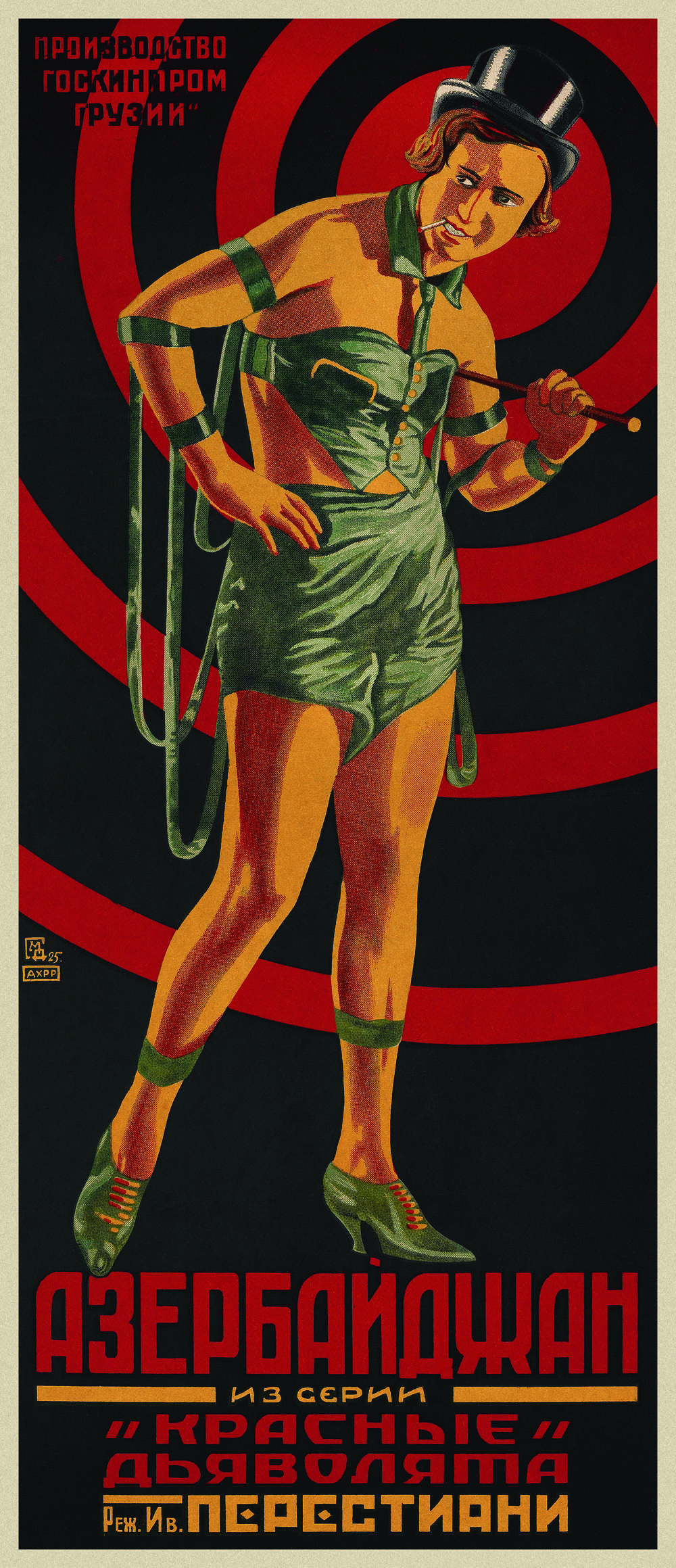
Azerbaijan
53 × 23
1925
Original title Durfen wir schweigen?
USSR (Georgia), c. 1923
Director Ivan Perestiani
A3 £30, A1 £75
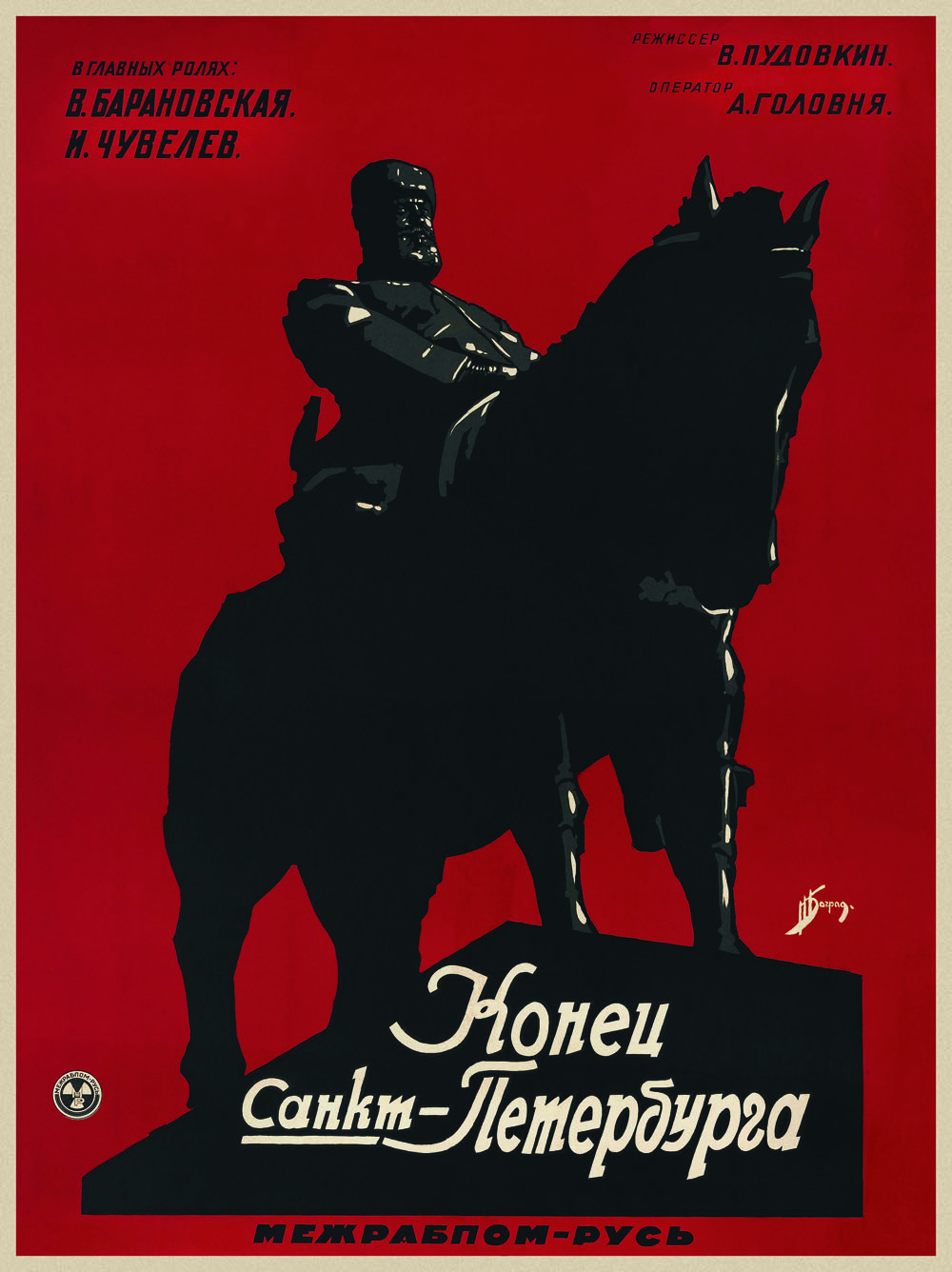
The End of Saint Petersburg
125.5 × 95
1927
USSR, 1927
Director Vsevolod Pudovkin
A3 £30, A1 £75

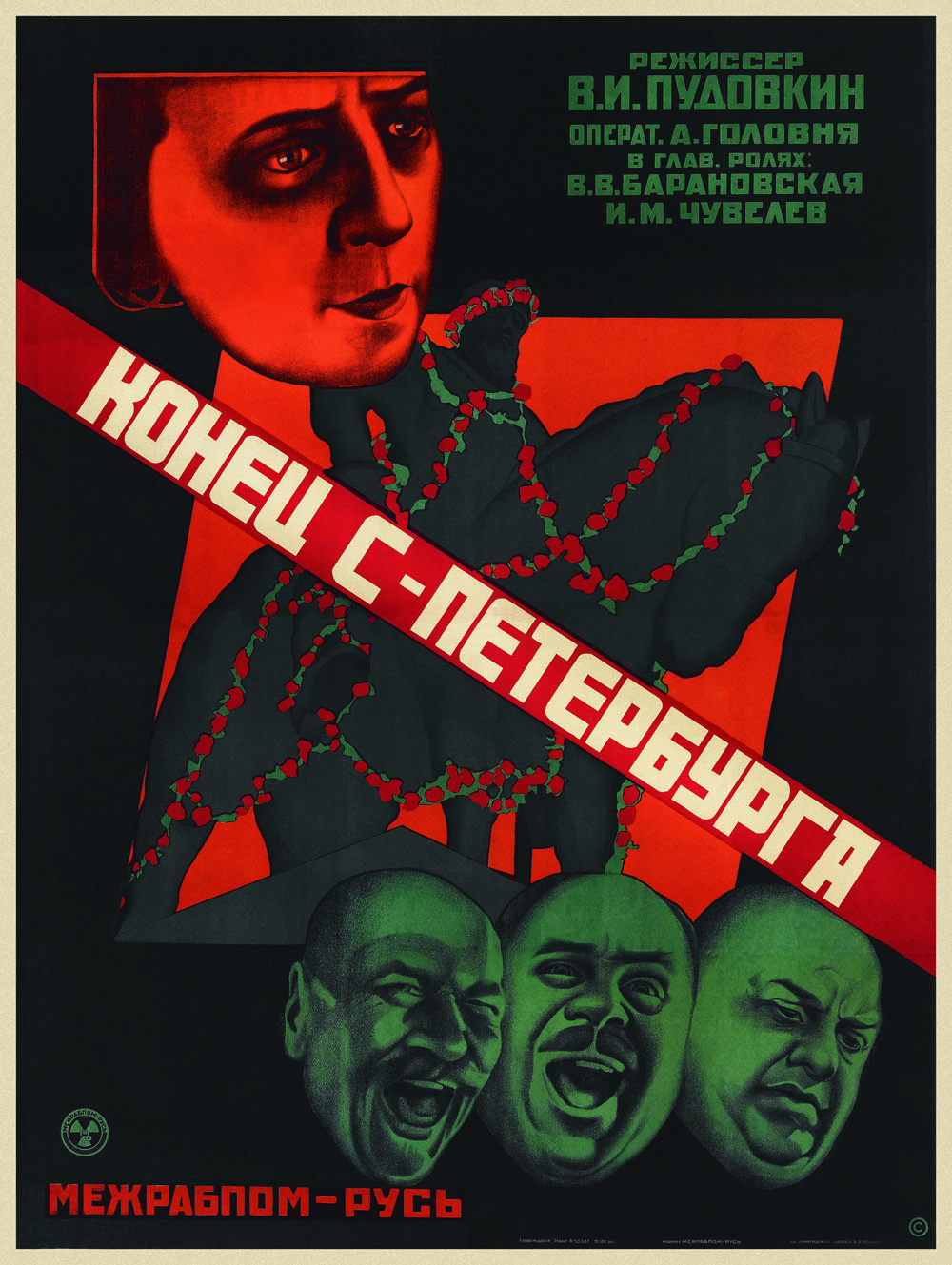
The End of Saint Petersburg
126.4 × 95.5
c. 1927
USSR, 1927
Director Vsevolod Pudovkin
A3 £30, A1 £75
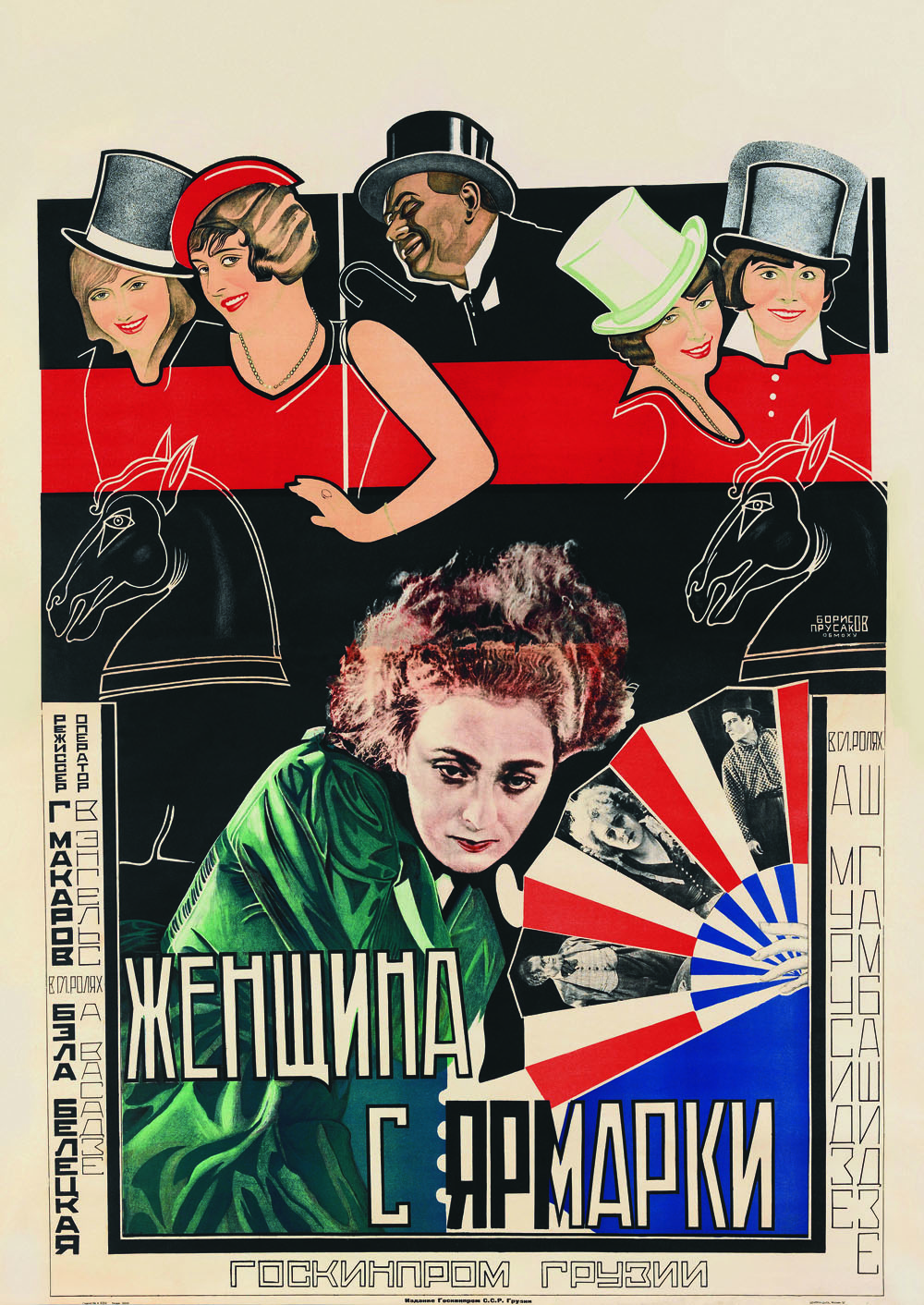
A Woman from the Fair
136 × 107
1928
USSR (Georgia), 1928
Director Georgii Makarov
A3 £30, A1 £75
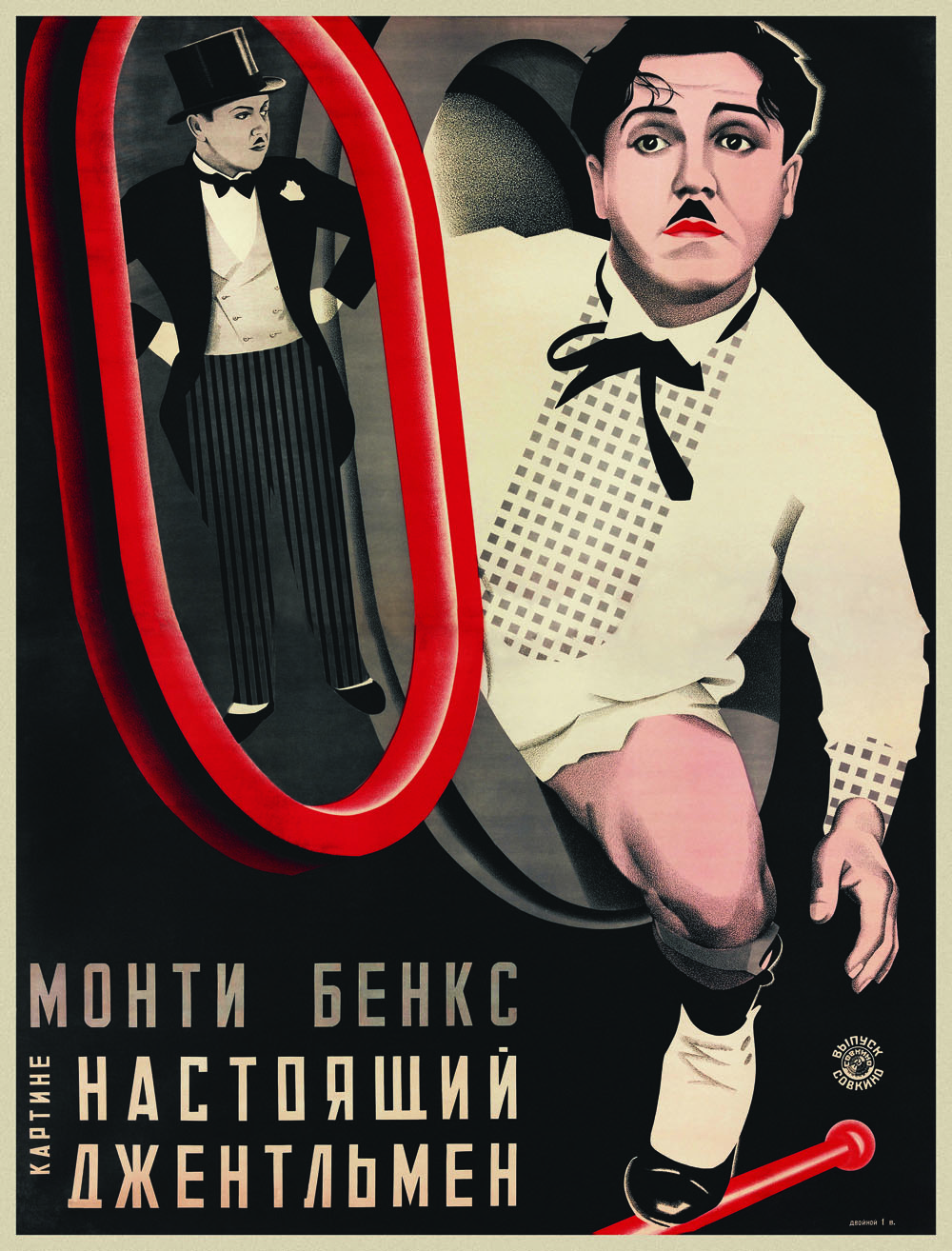
A Real Gentleman
143 × 108
1928
USA, 1928
Director Clyde Bruckman
A3 £30, A1 £75

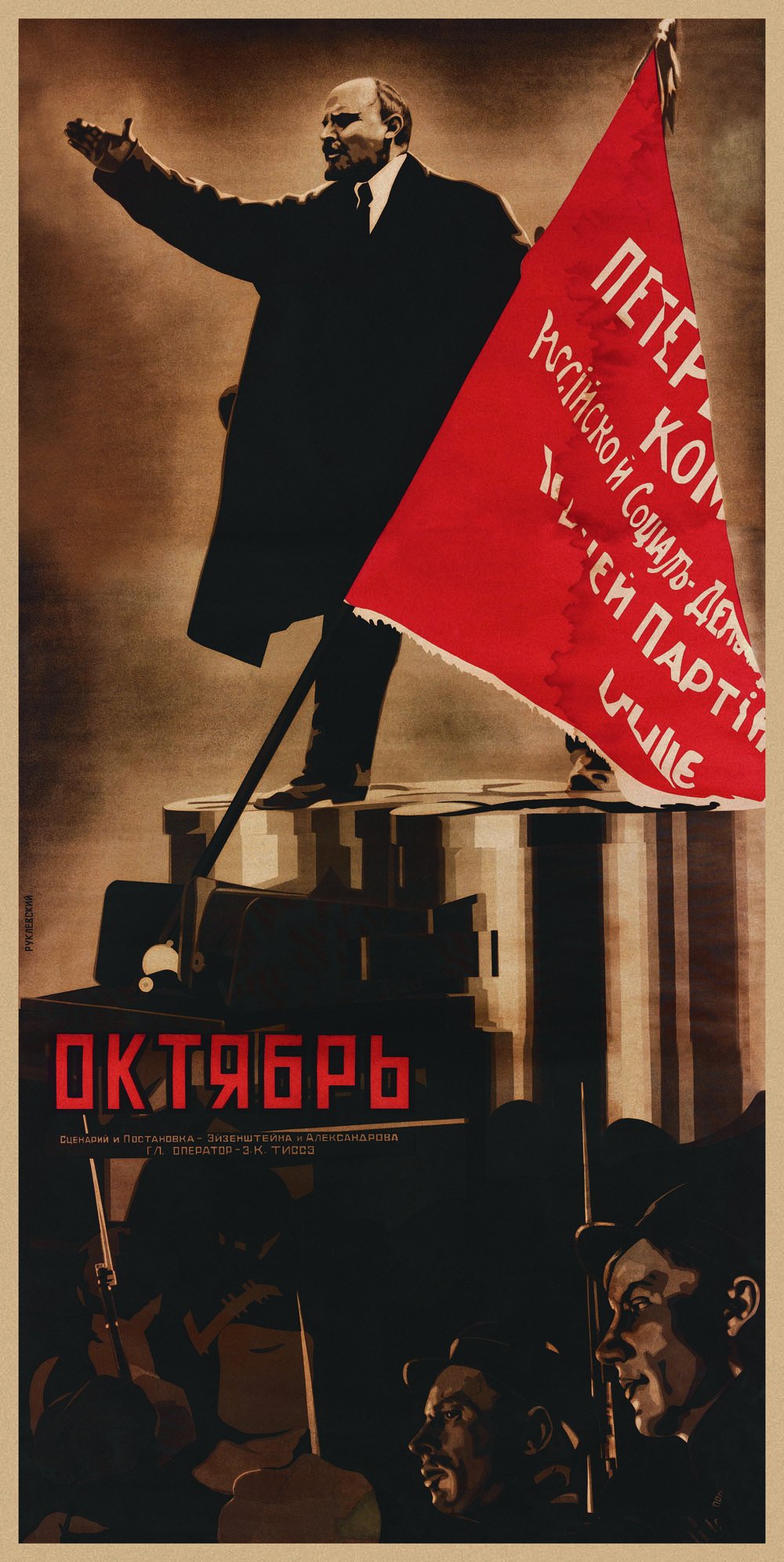
October
205 × 100.5
1927
USSR, 1927
Directors Grigorii Aleksandrov,
Sergei Eisenstein
A3 £30, A1 £75
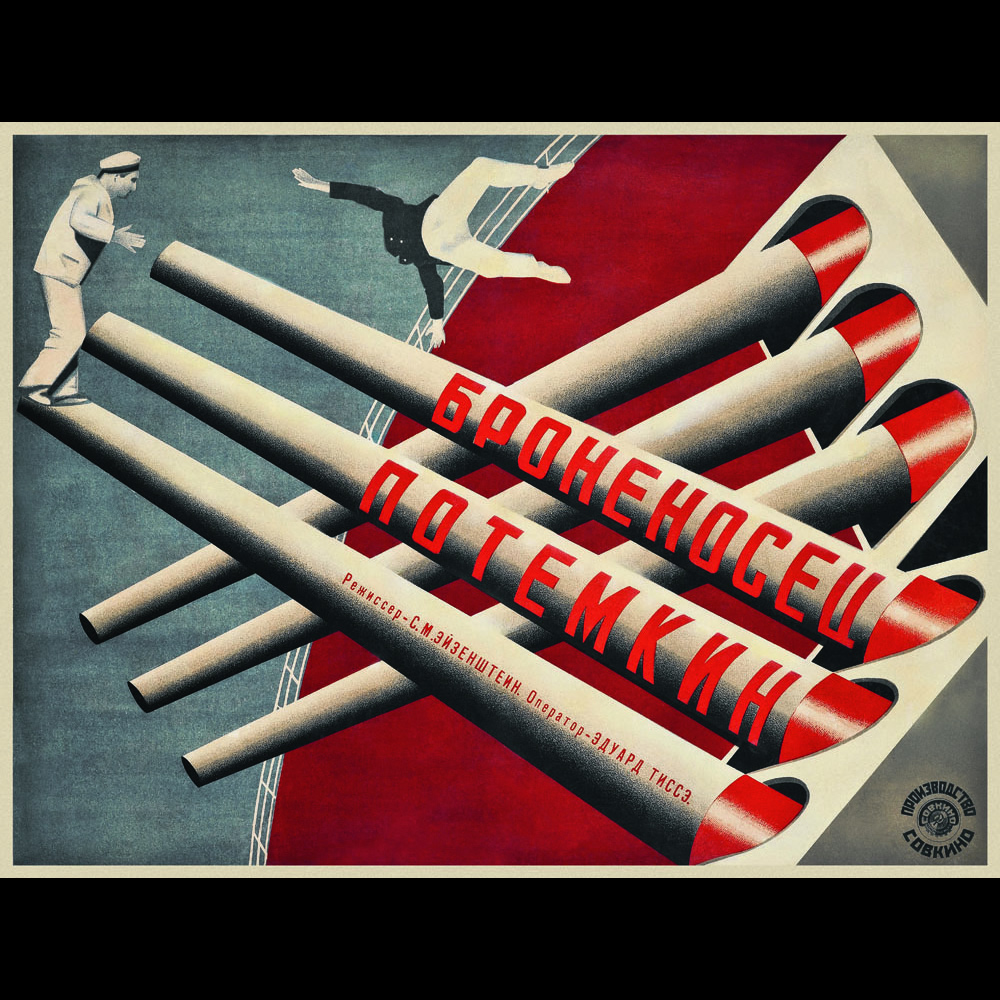
Battleship Potemkin
67 × 90
1925
USSR, 1925
Director Sergei Eisenstein
A3 £30, A1 £75

KINO/FILM EVENTS
Accompanying the exhibition was a programme of events that brought the Soviet silent screen to life. Highlights included film screenings, expert talks and a special display of Dziga Vertov’s personal possessions.
AN EVENING CELEBRATING DZIGA VERTOV
12 March 2014
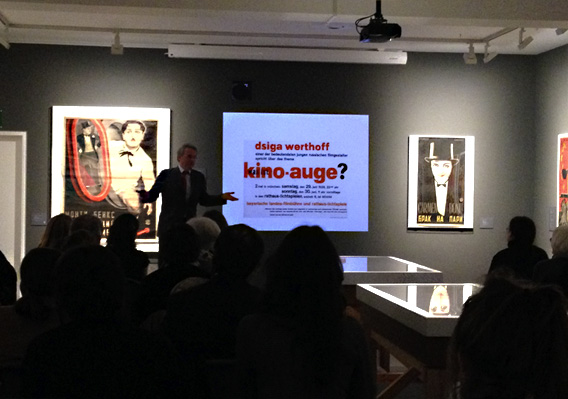
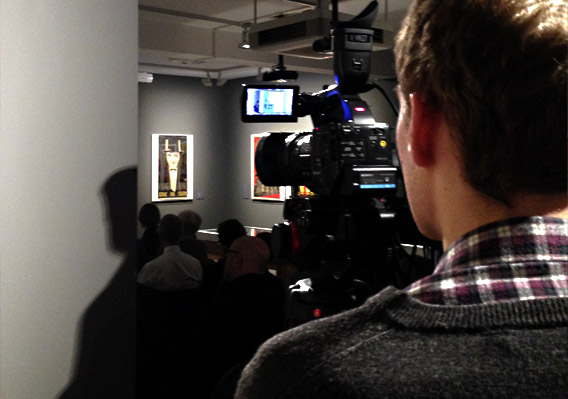
A unique evening celebrating the life of ground-breaking Soviet director Dziga Vertov. A screening of a newly discovered short film by Vertov and presentation of his personal effects was complimented by talks from collector Martijn Le Coultre and academic Eva Bezverkhny.
‘BED AND SOFA’ (dir: Abram Room, 1927, 75’)
26 February 2014
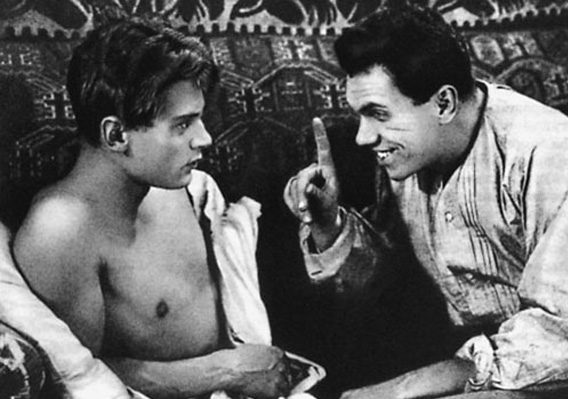
A special collaborative event with Obskura saw GRAD present this landmark Soviet production, so controversial that it was banned on two continents. A discussion with Professor Julian Graffy (SSEES, UCL), artist Maria Kapajeva and Dr Margherita Sprio (University of Westminster) accompanied the screening.
CURATOR TOURS
, 22 February 2014; 07 March 2014
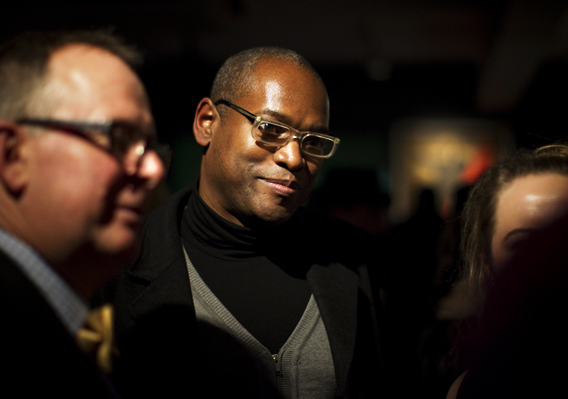
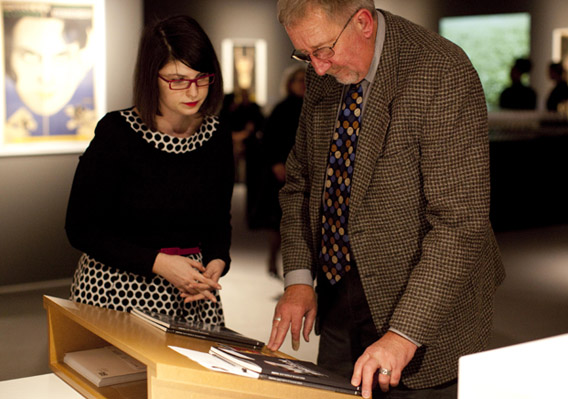
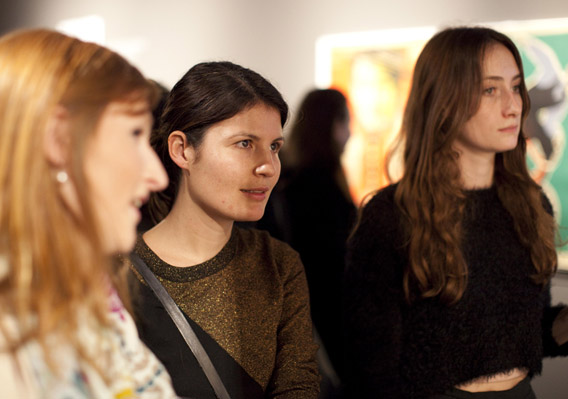
PANEL DISCUSSION
22 January 2014
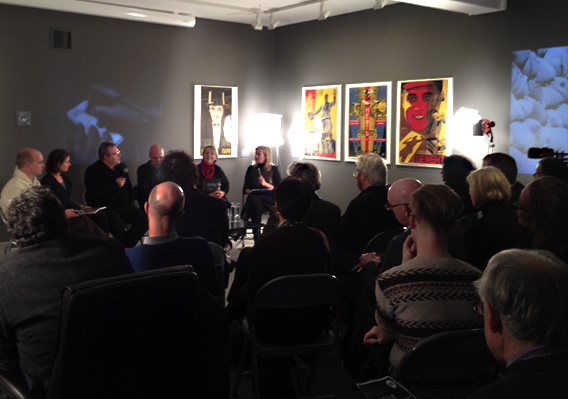
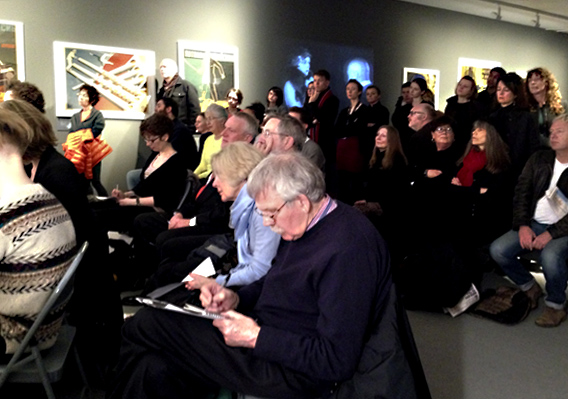
Kino/Film exhibition co-curators Elena Sudakova and Lutz Becker were joined by Dr. Paul Rennie (Central St Martins), Isabel Stevens (BFI), Dr Philip Cavendish (UCL) and Prof Christina Lodder (University of Kent). The panel discussed the climate of creative effervescence in the early days of the Soviet Union, which led to important innovations in both film-making and poster design and produced a whole new visual vocabulary still in use today.
OPENING NIGHT
16 January 2014
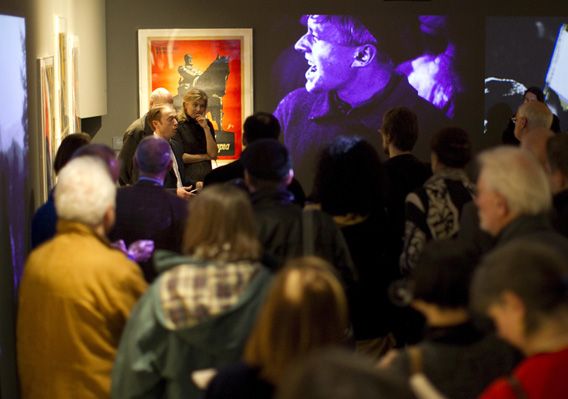
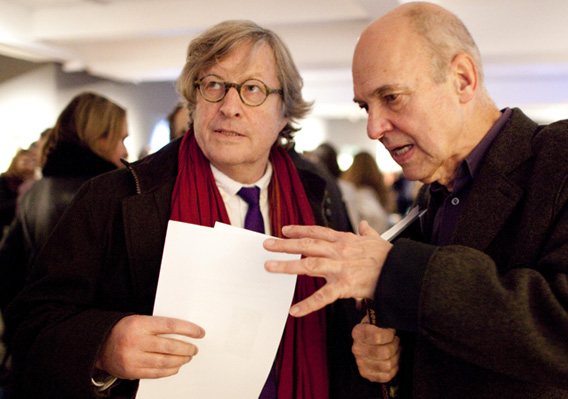
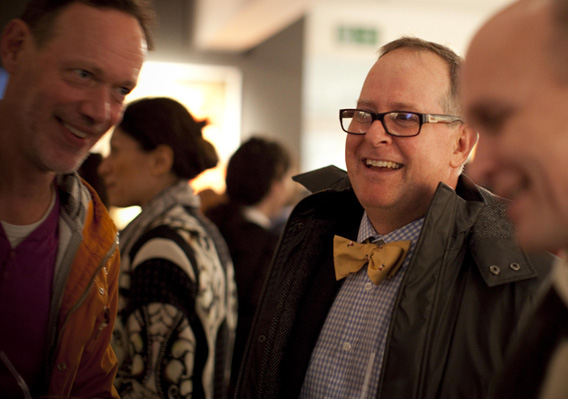
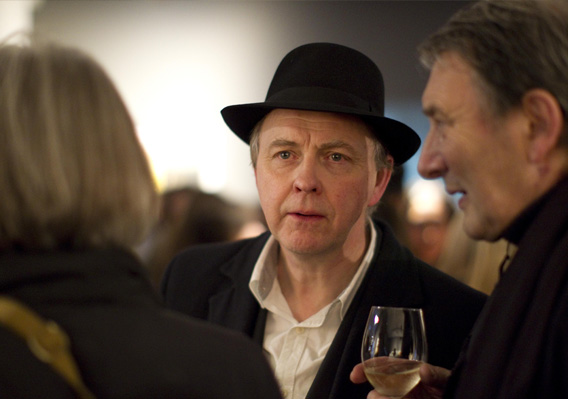
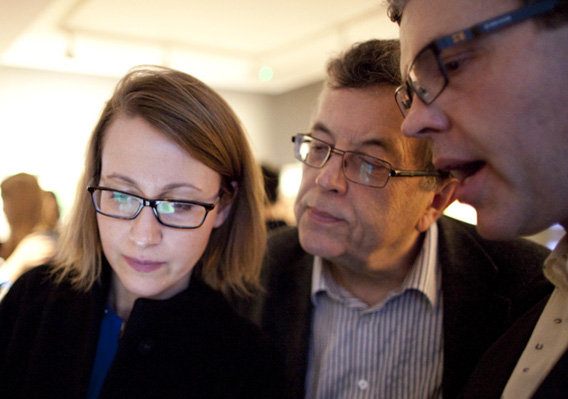
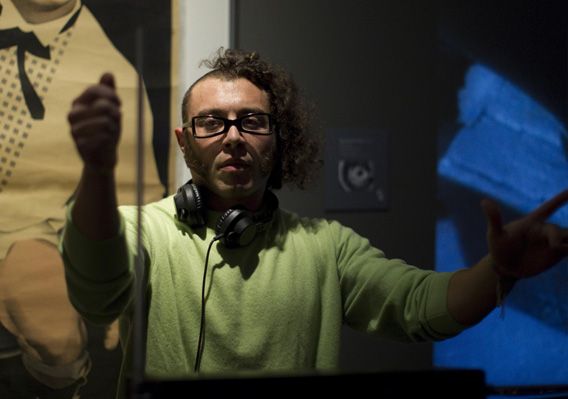
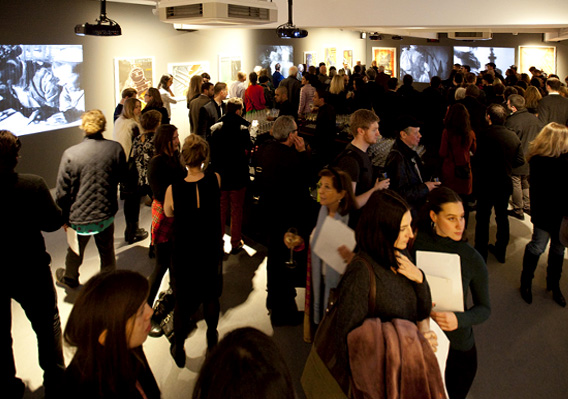
GRAD opened its doors to press, guests and exhibiting artists to celebrate Kino/Film: Soviet Posters of the Silent Screen.
Stone Lithography Demonstration at London Print Studio
29 March 2014
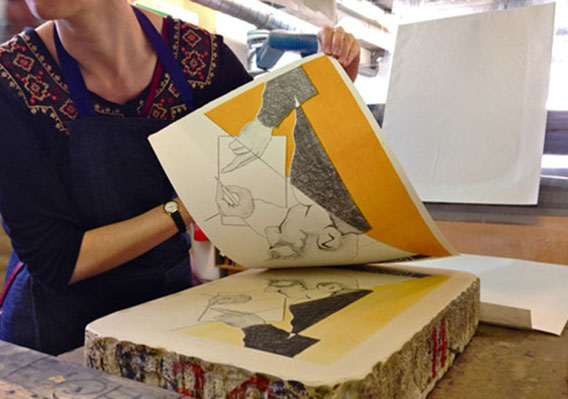
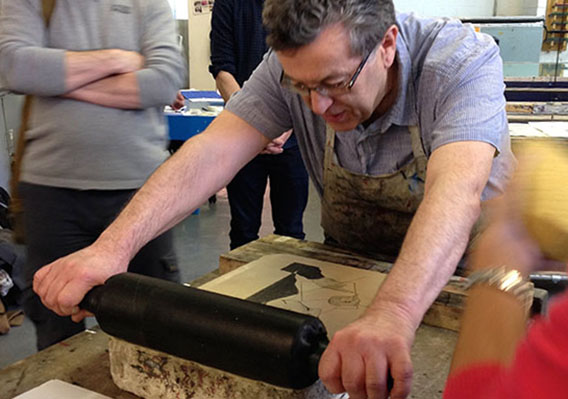
Following the invention of lithography in the late eighteenth century, printmaking and the graphic arts were transformed. Based on the incompatibility of water and oil, and utilizing a polished limestone block as a substrate on which to draw, lithography was the first printing process to truly capture and reproduce the expressive qualities of hand drawn images. Teaching of the technique has dwindled and few open access studios offer access to this exciting medium, so this was a rare opportunity to see stone lithography in action thanks to London Print Studio.



